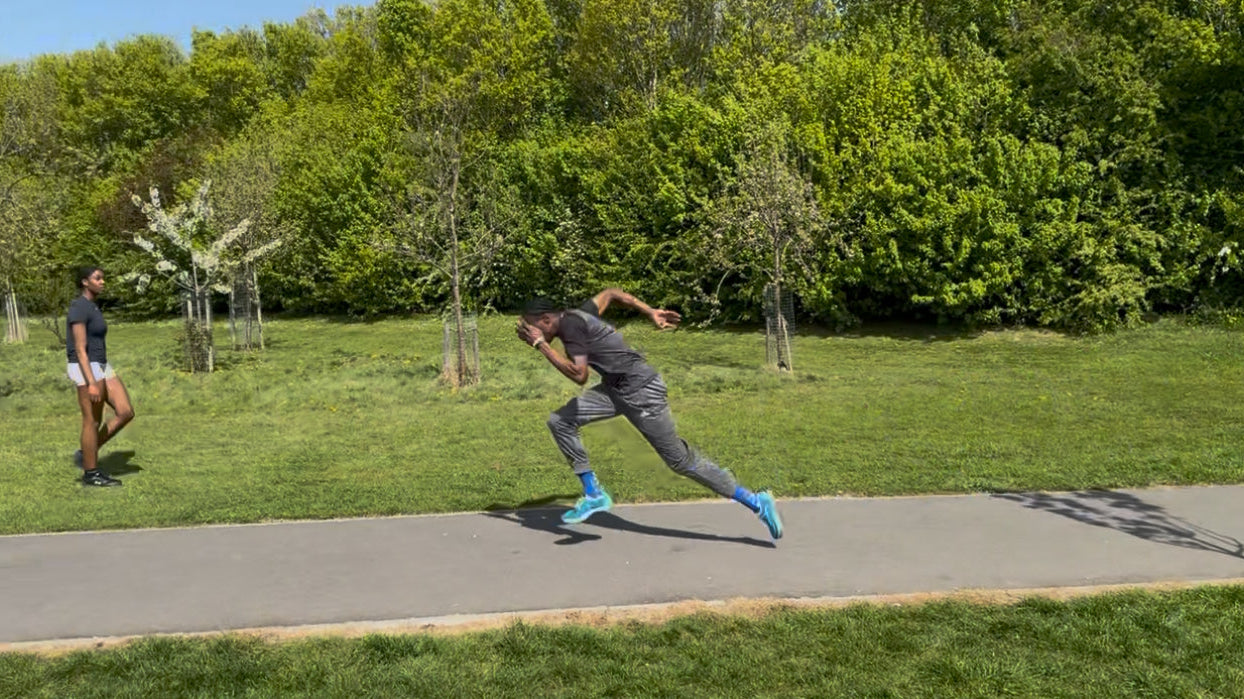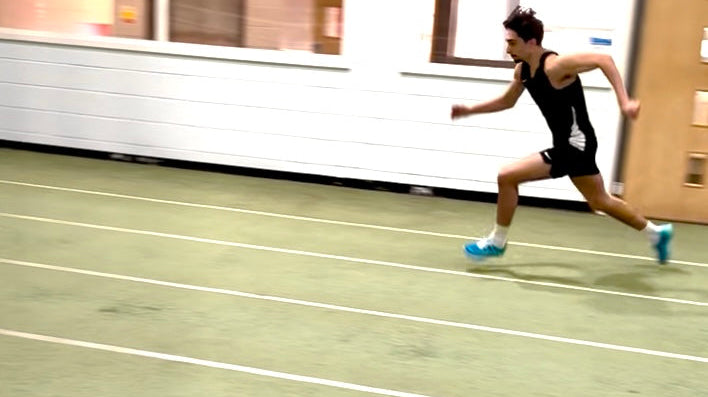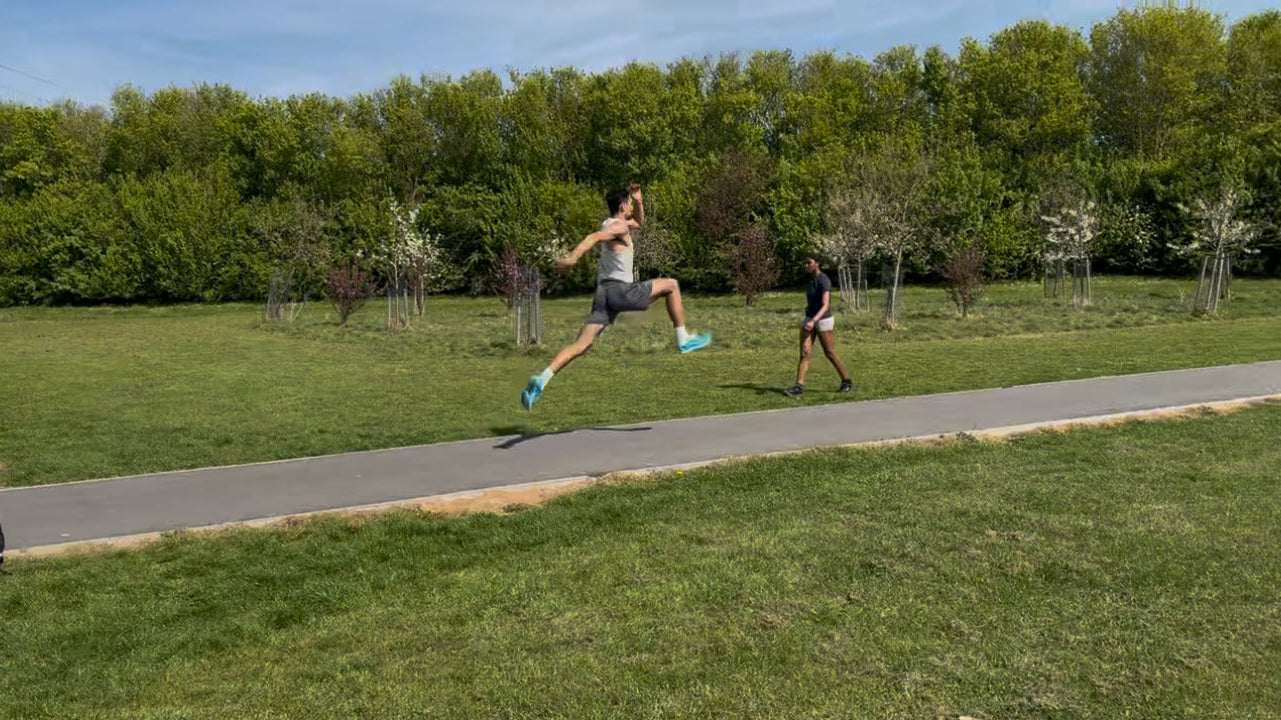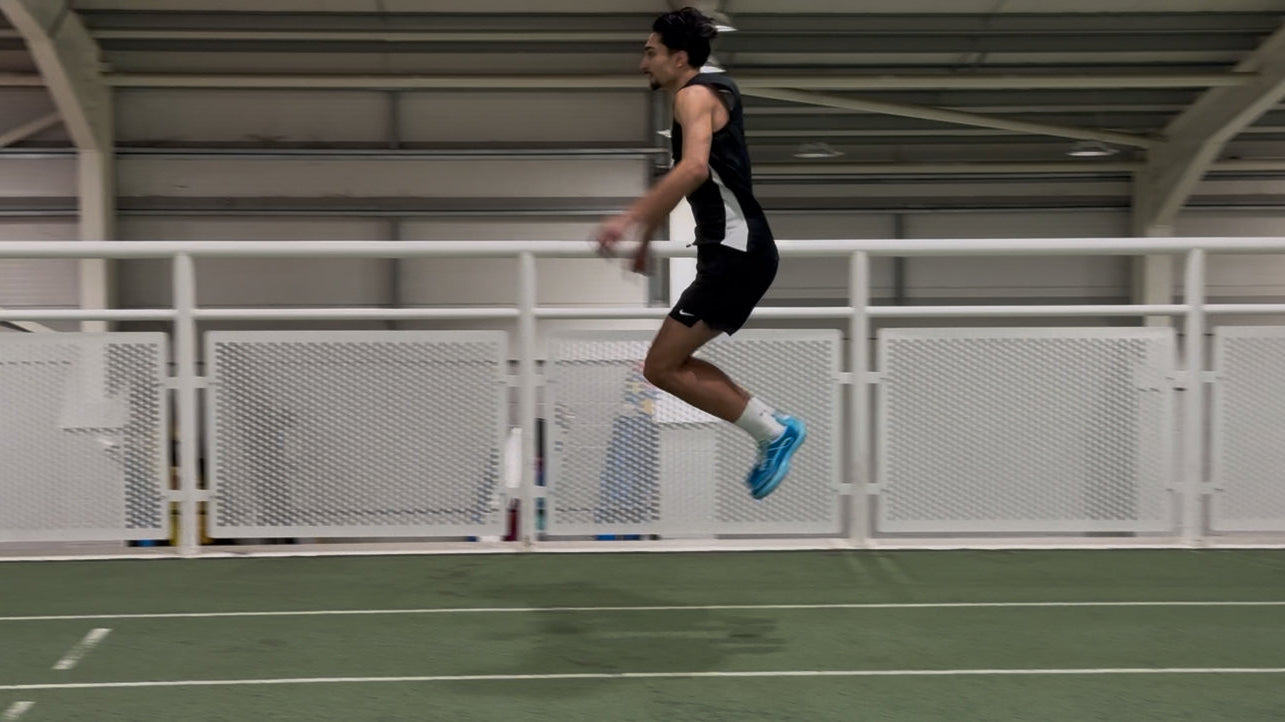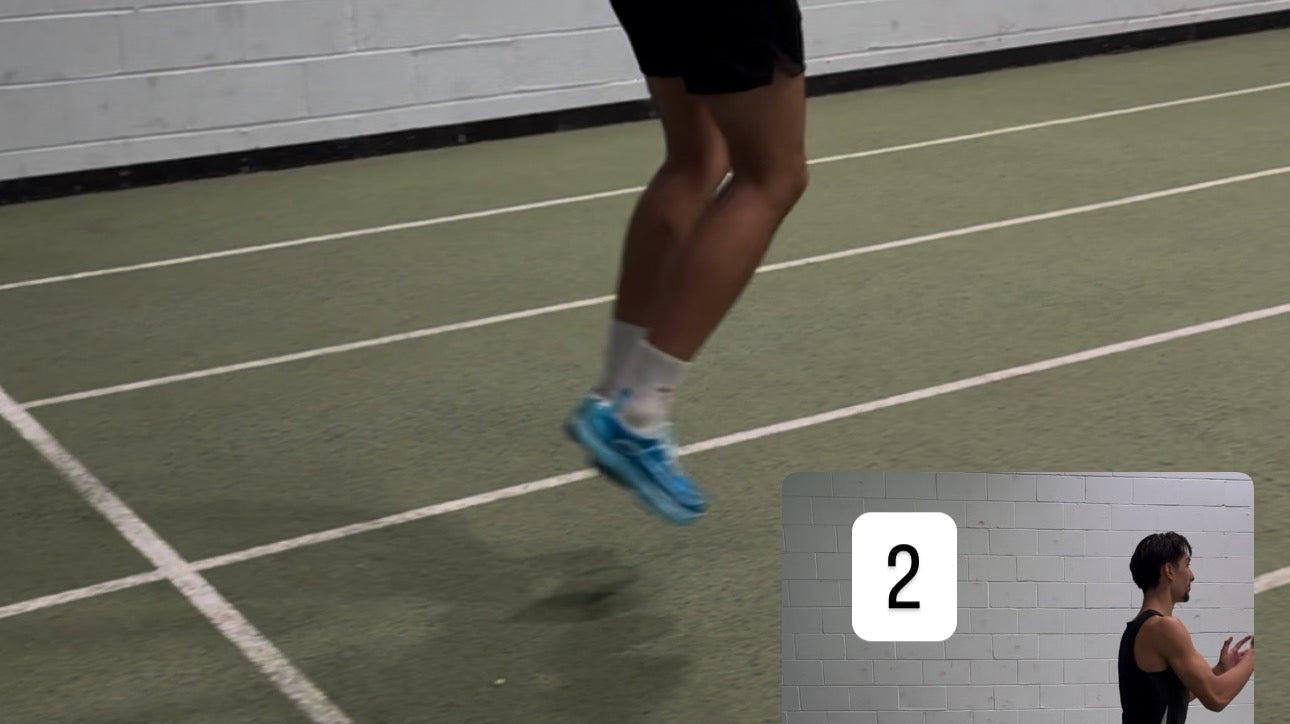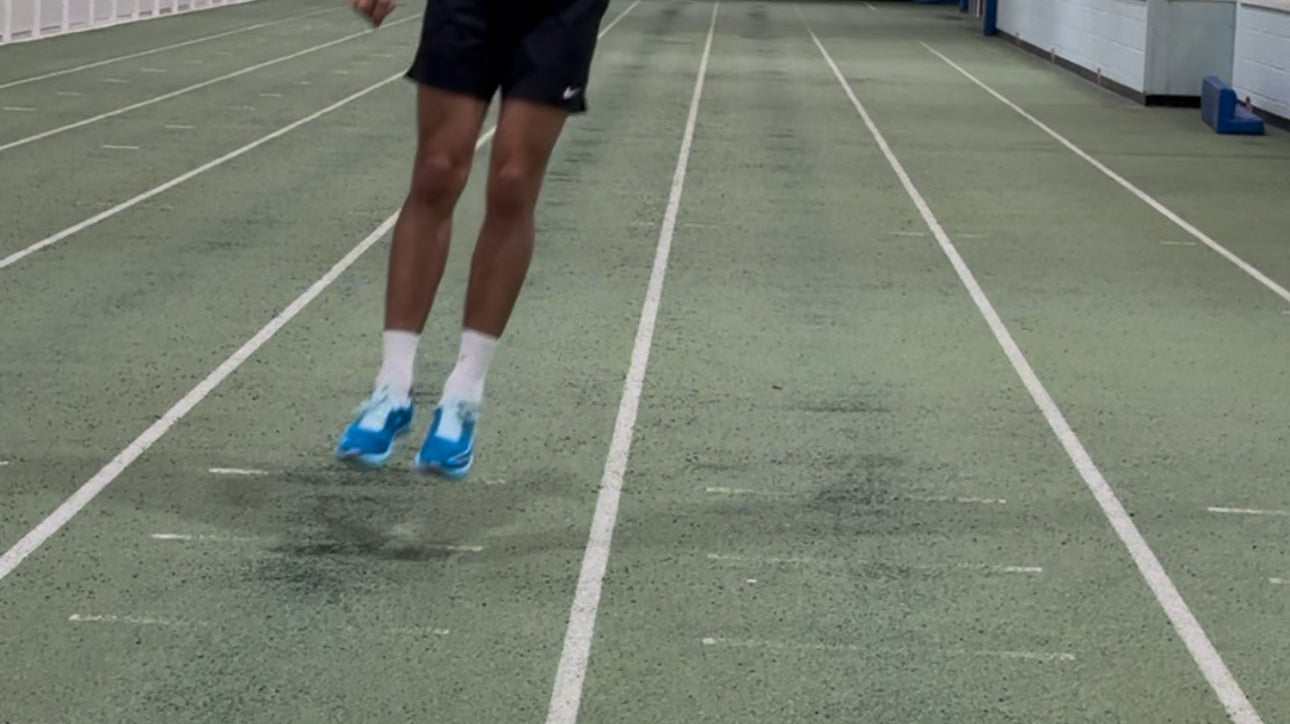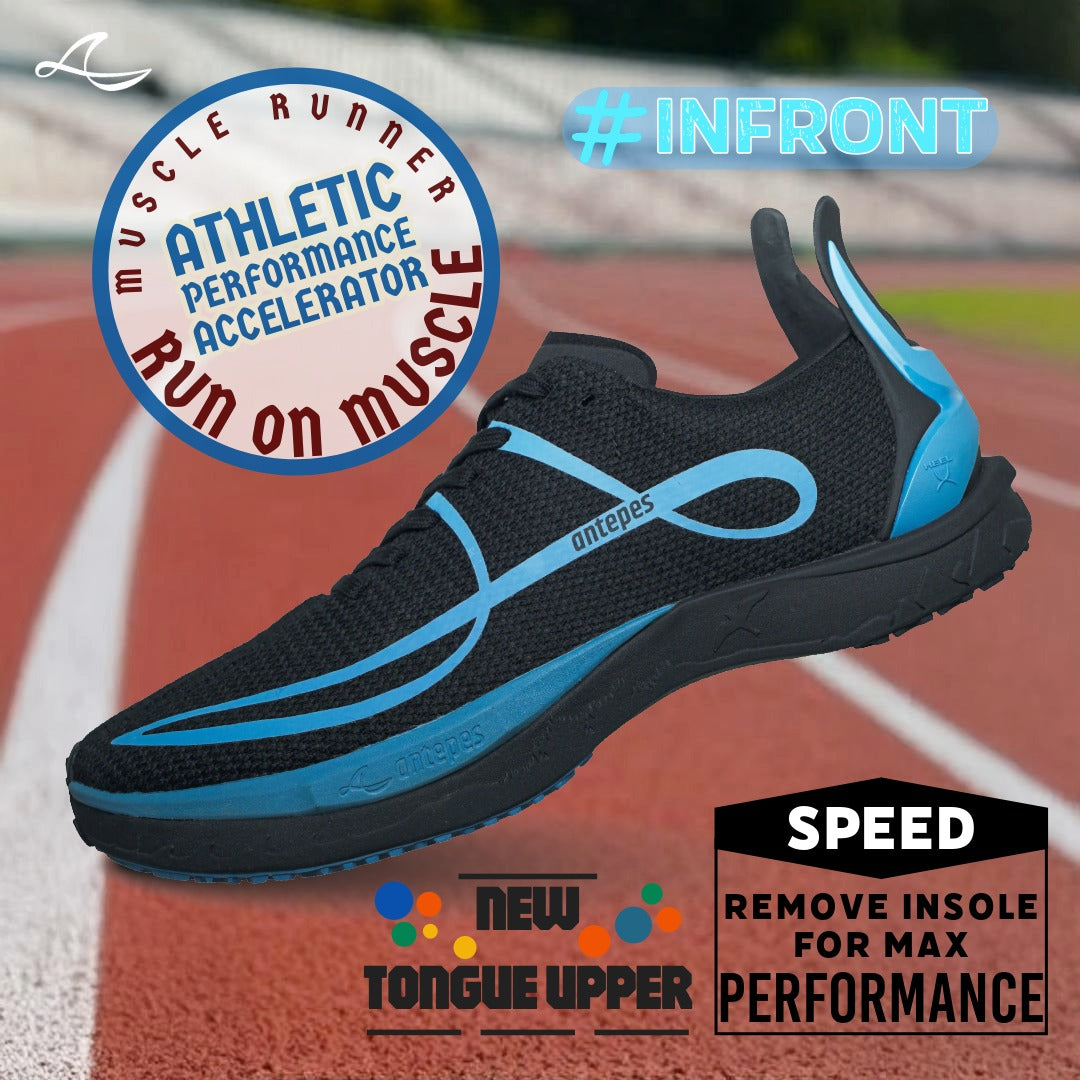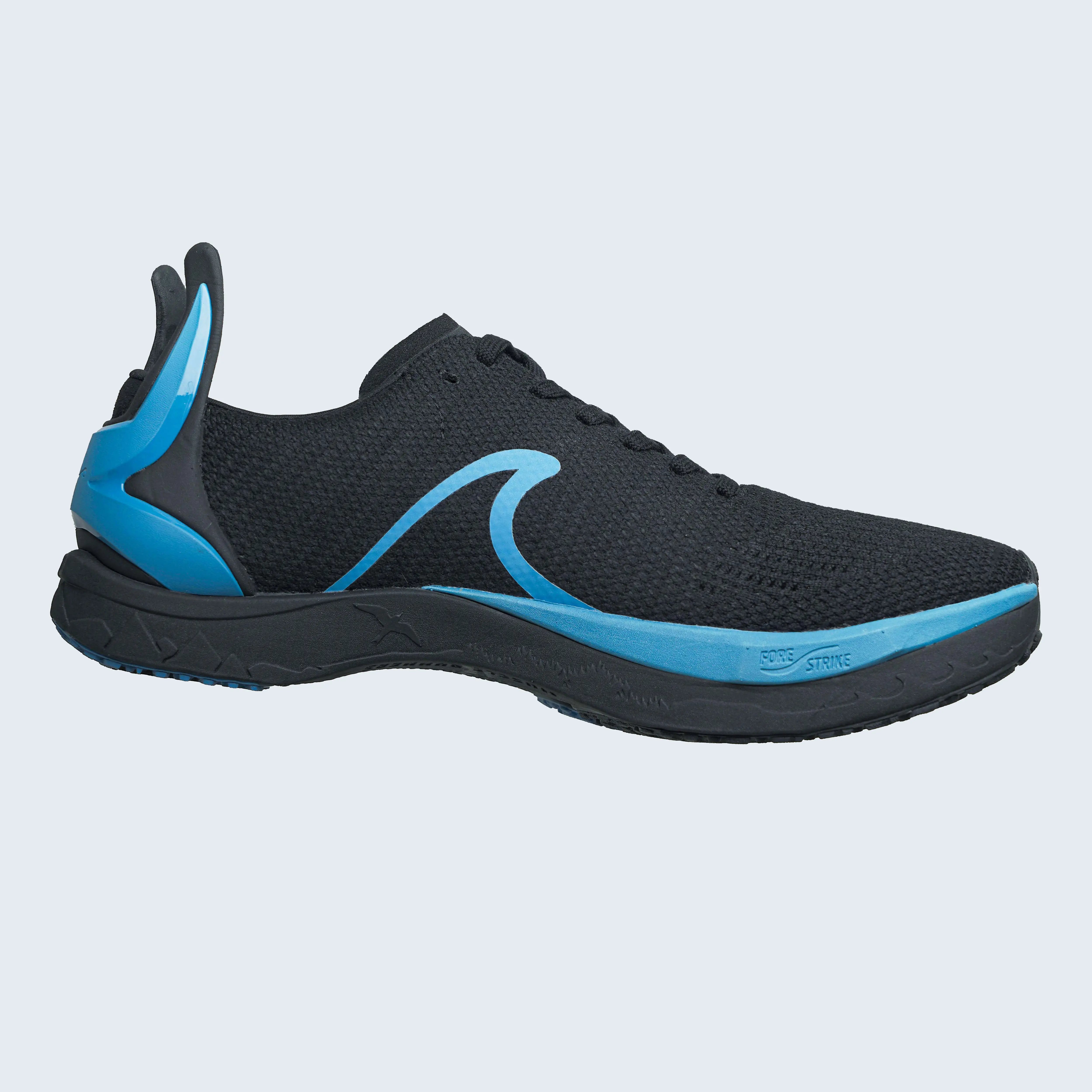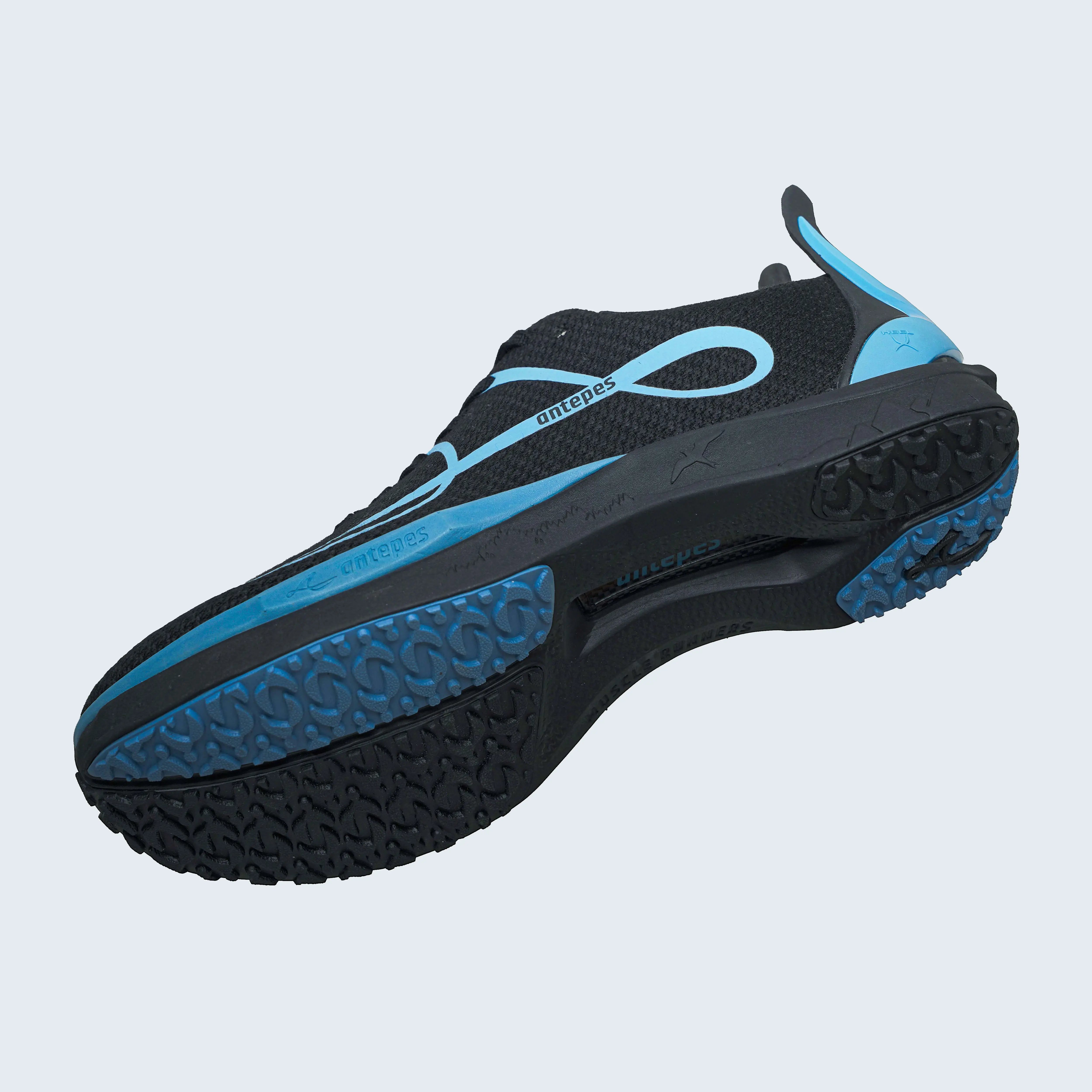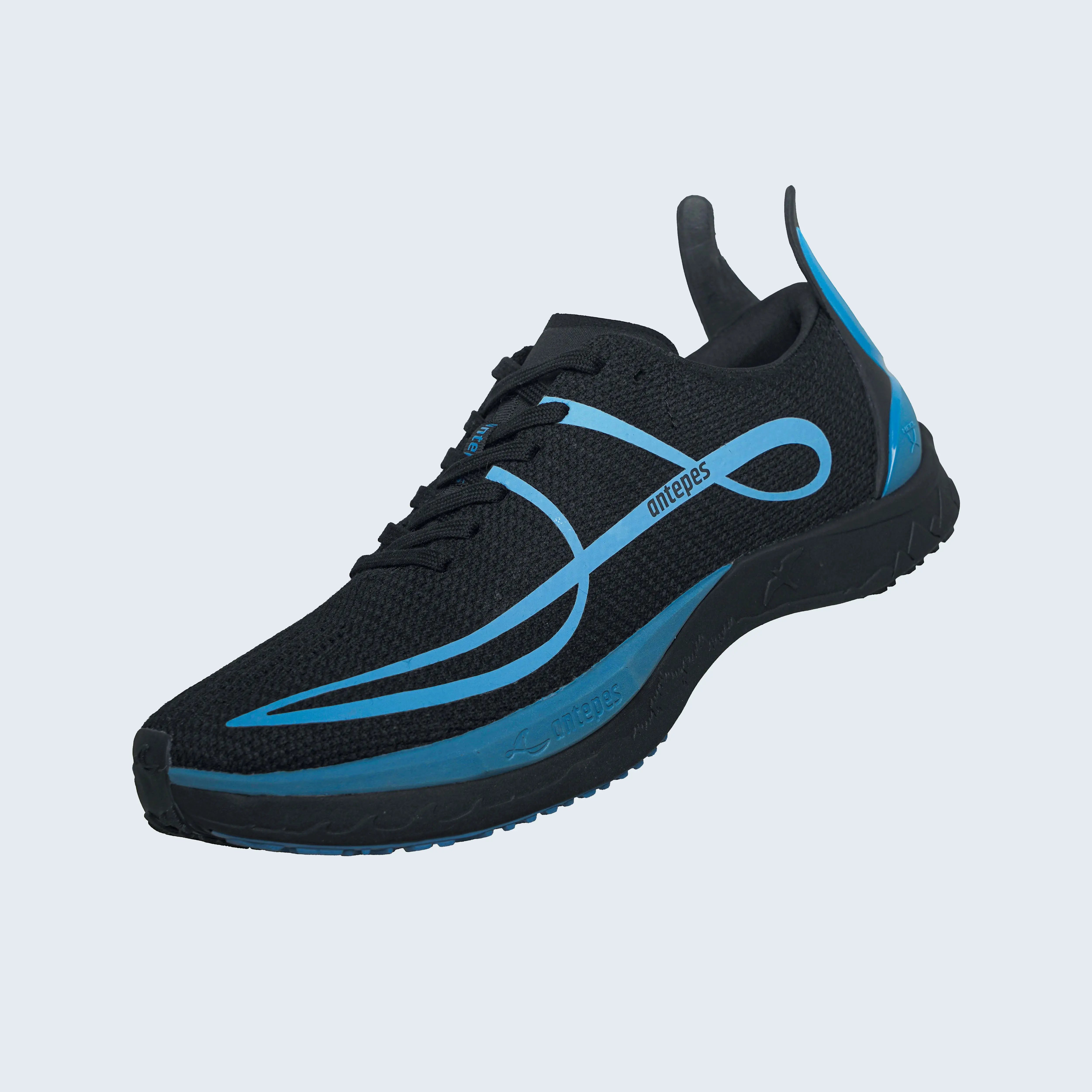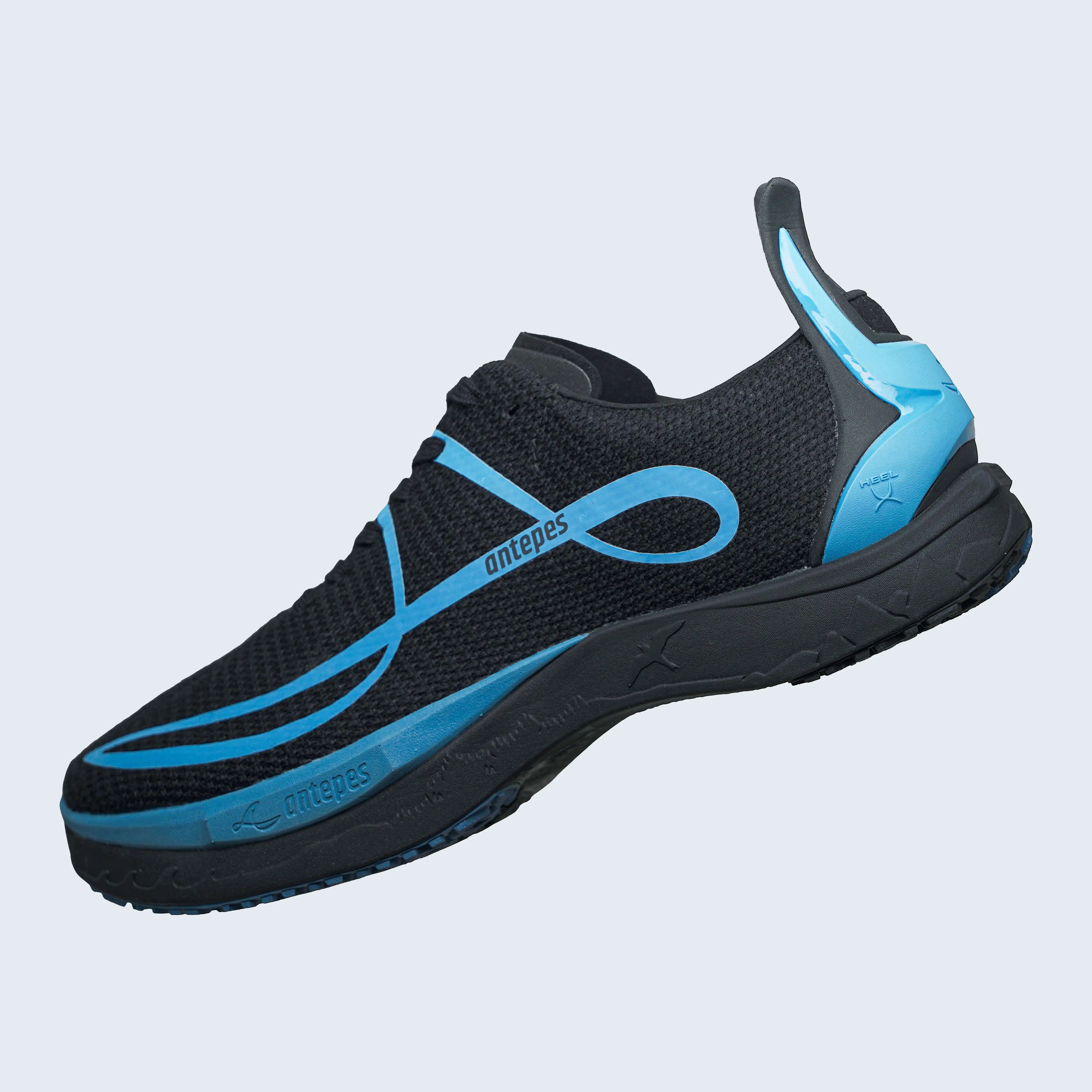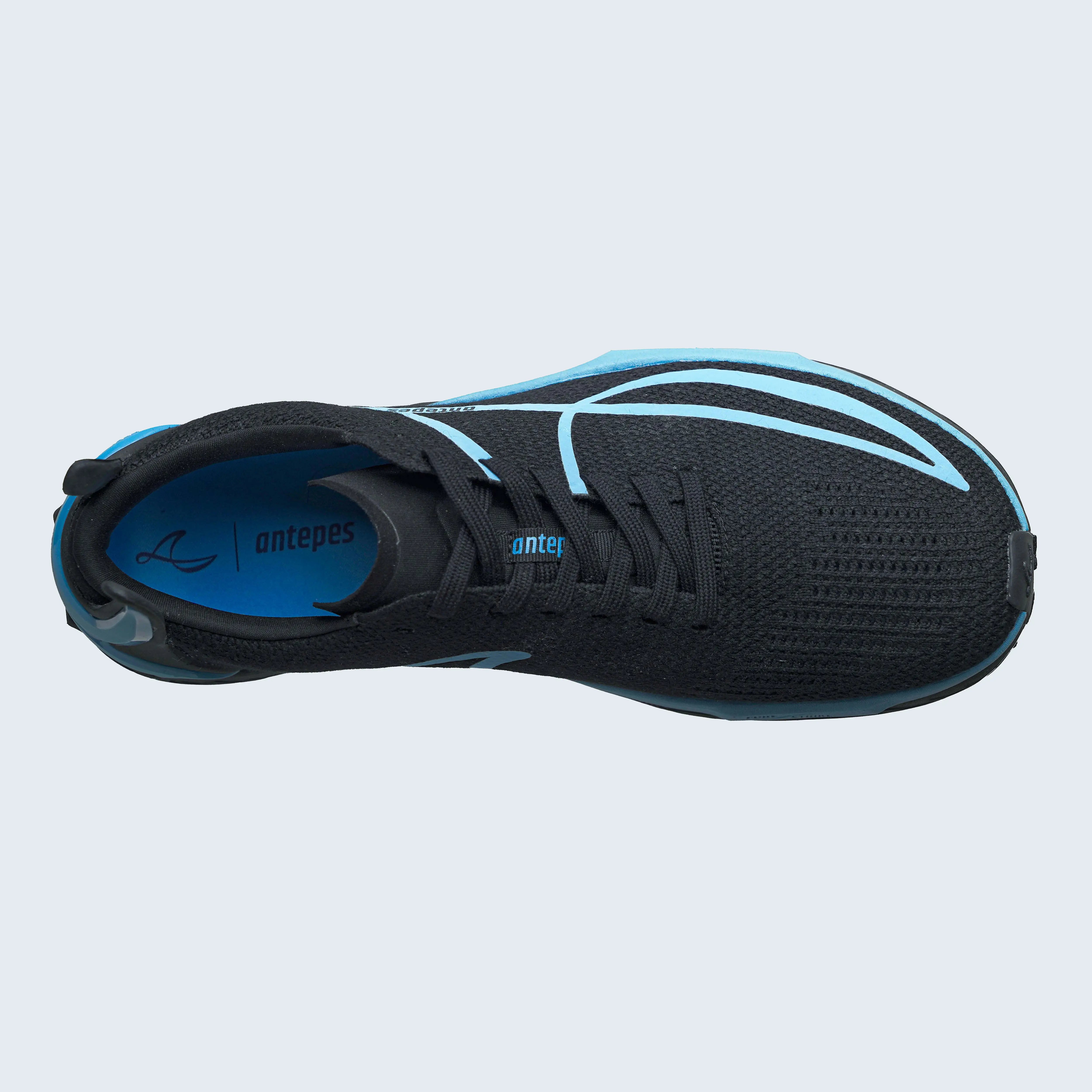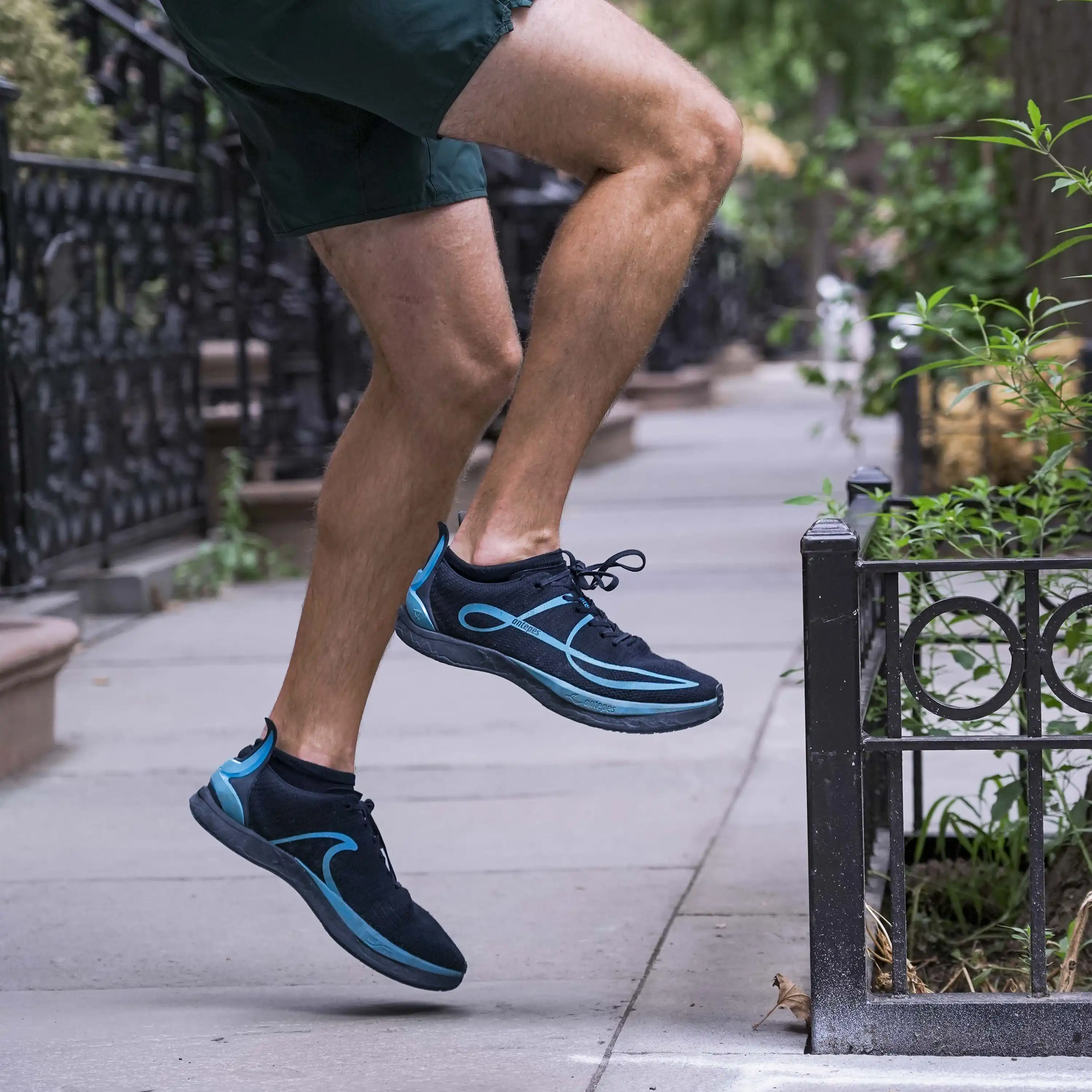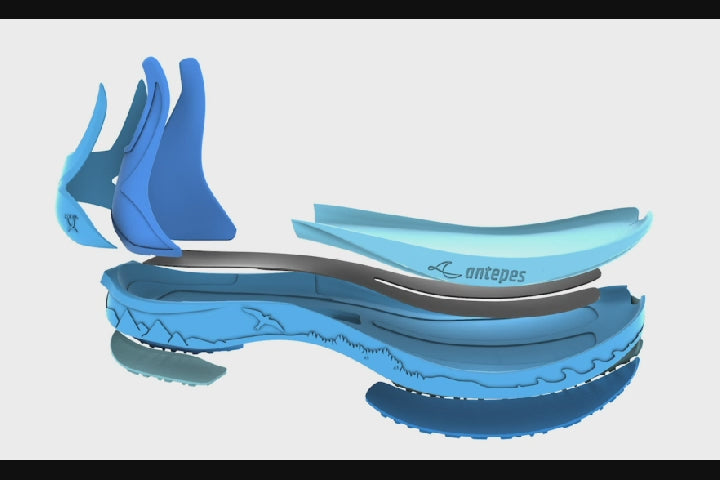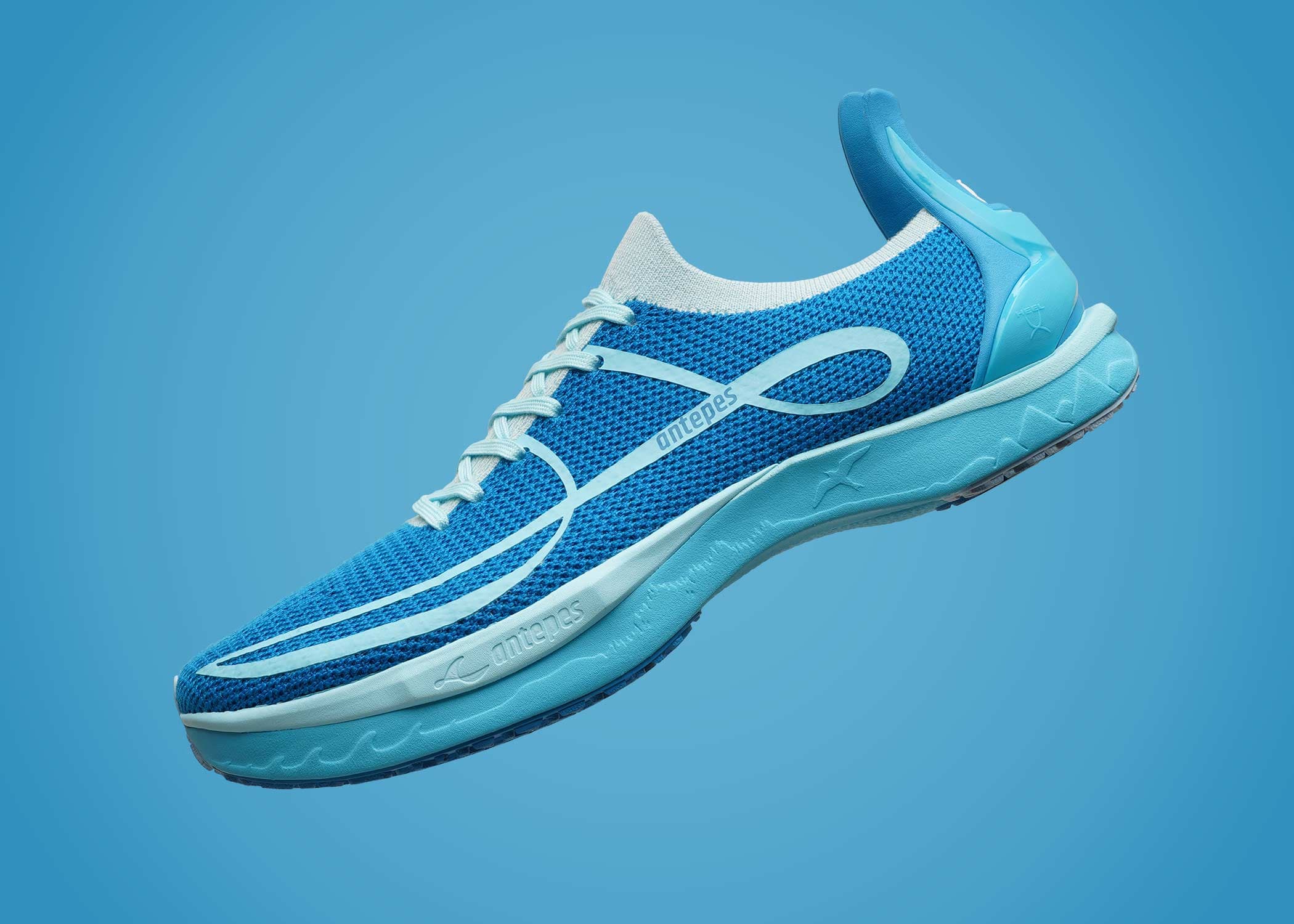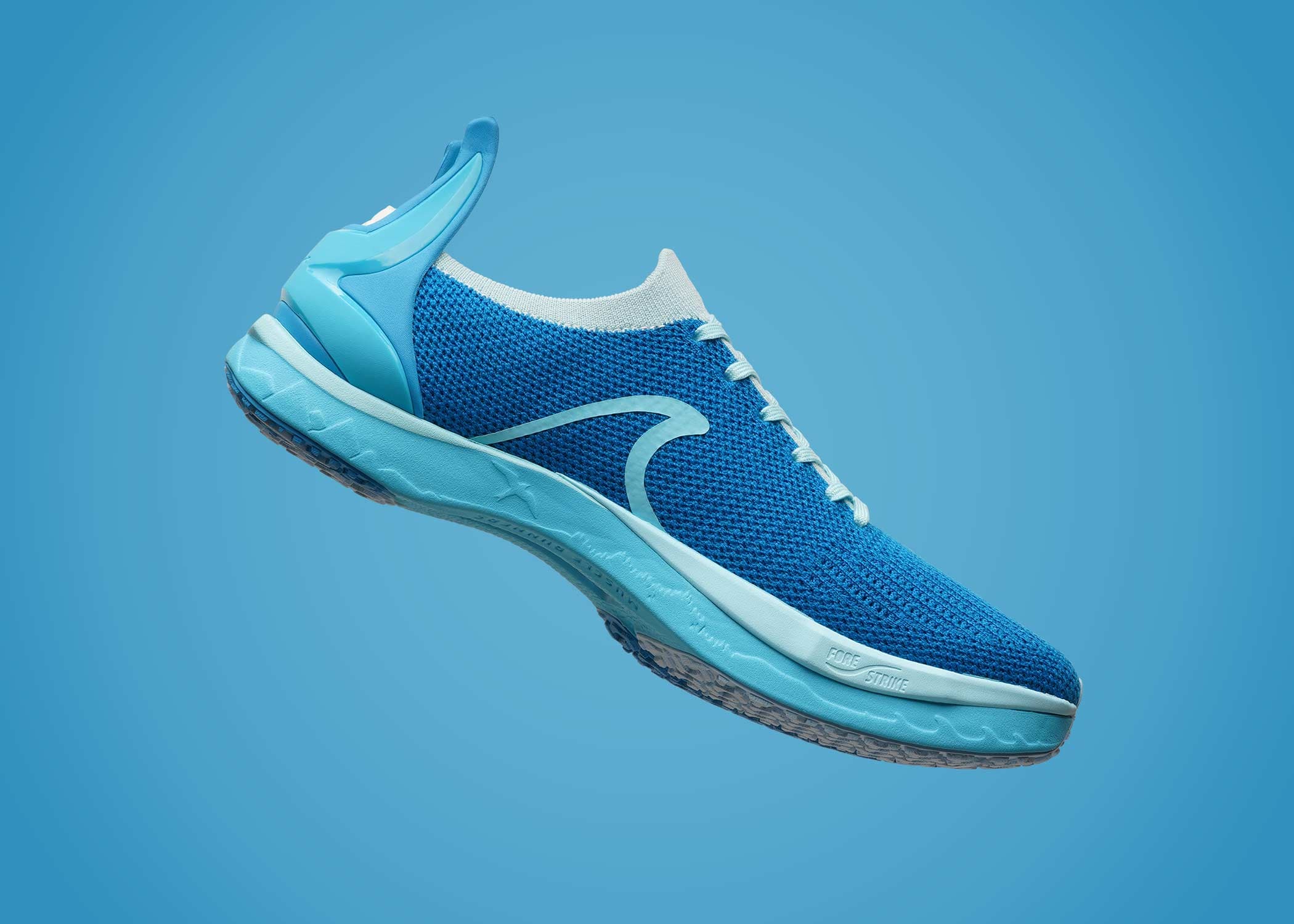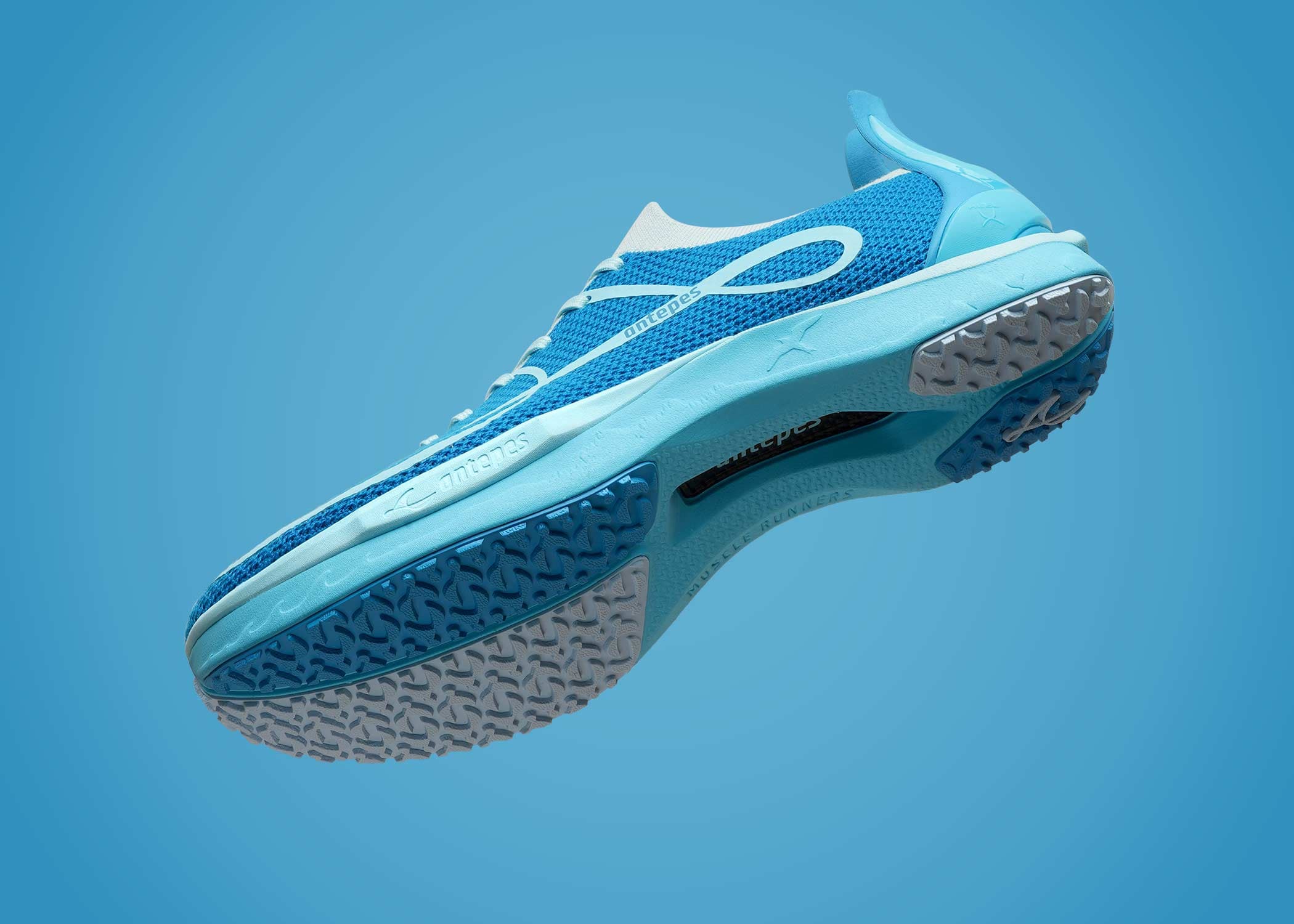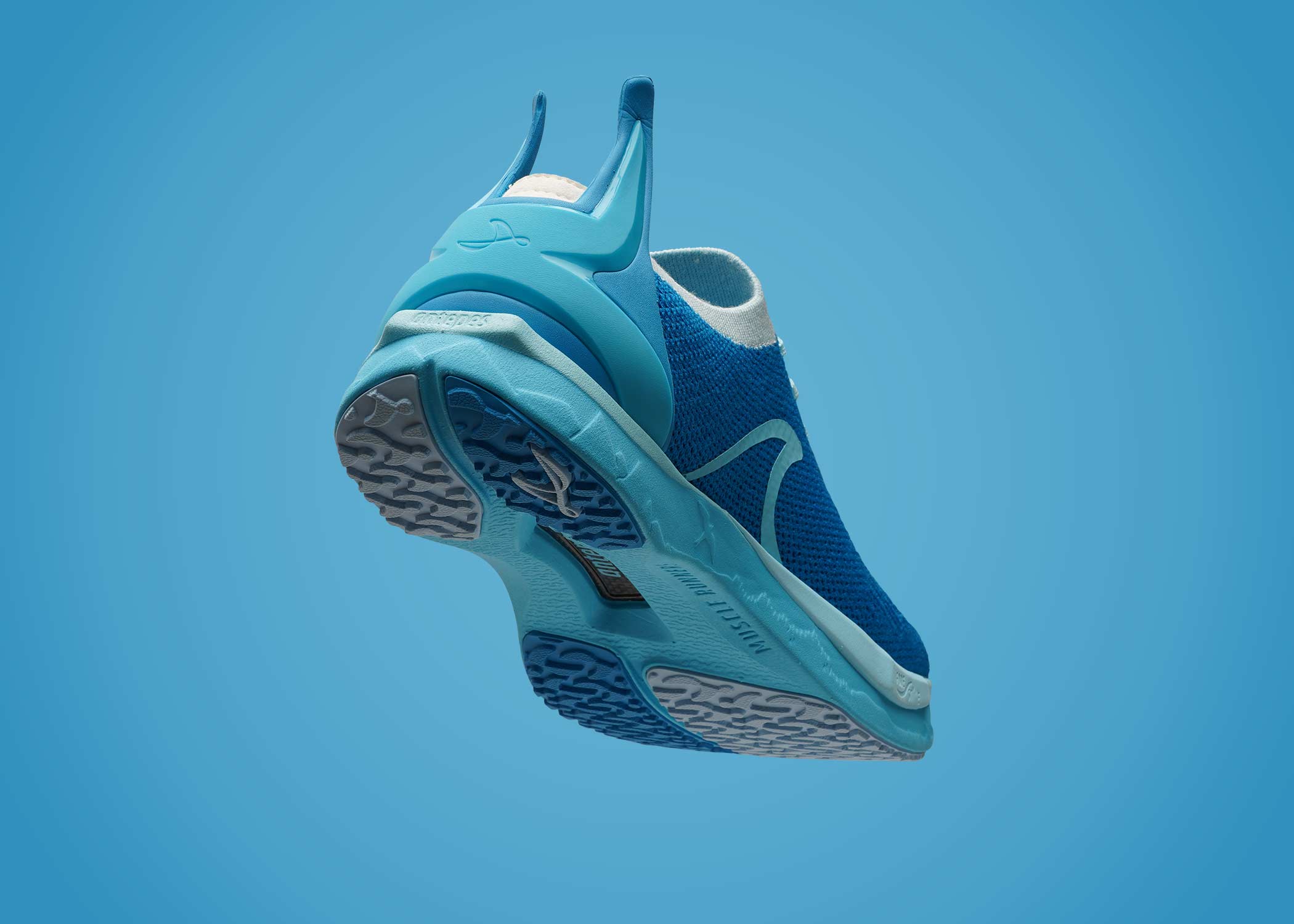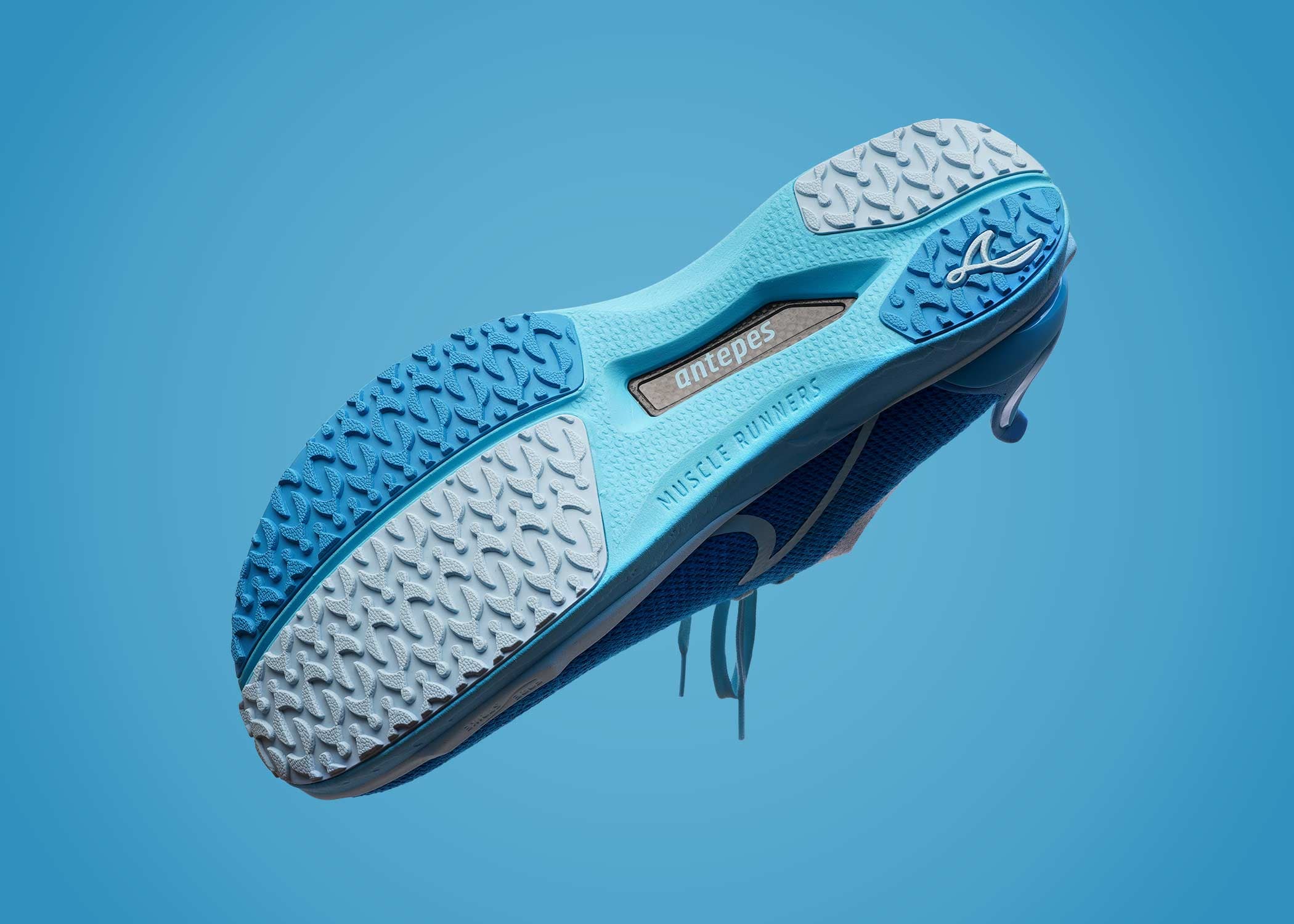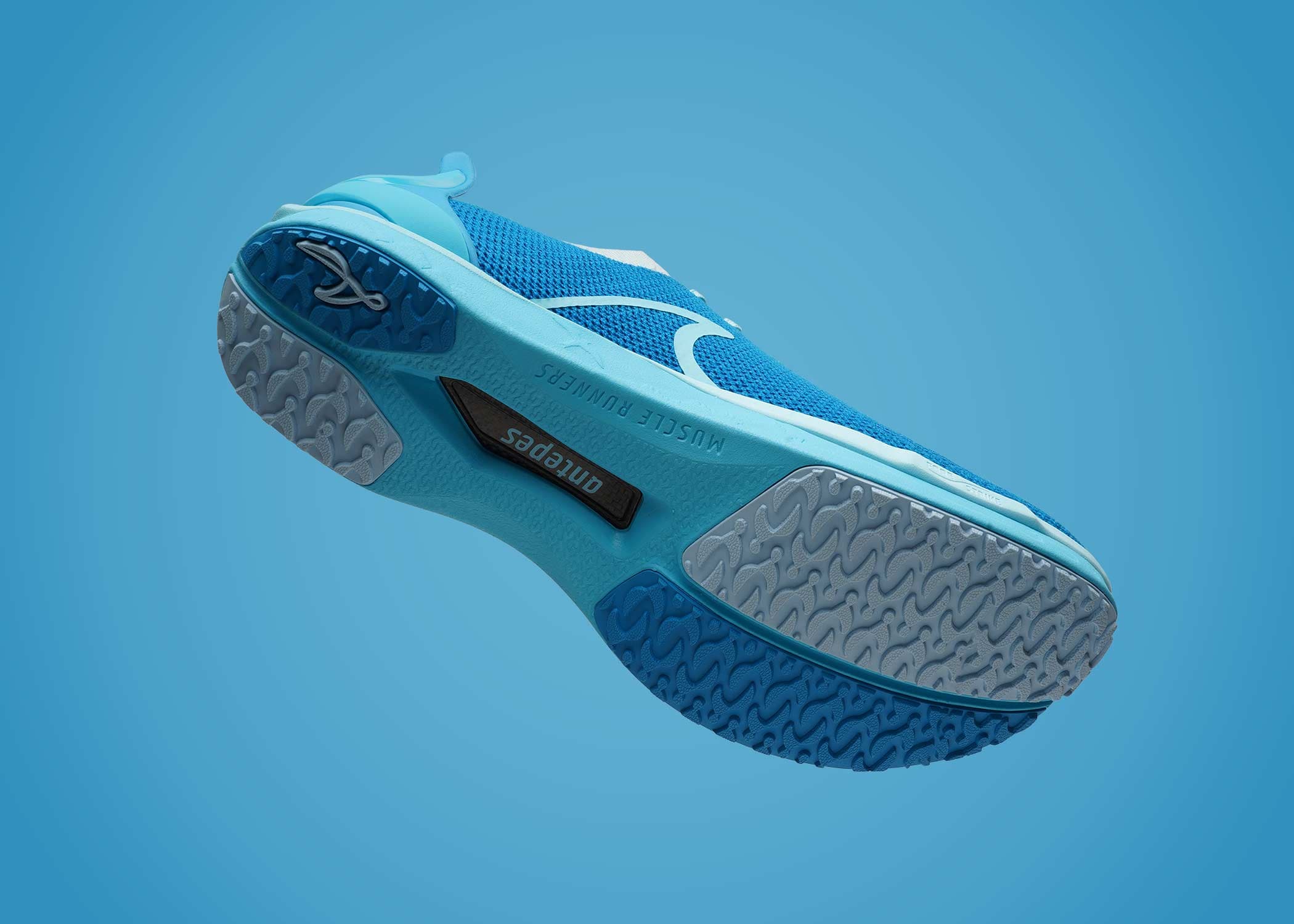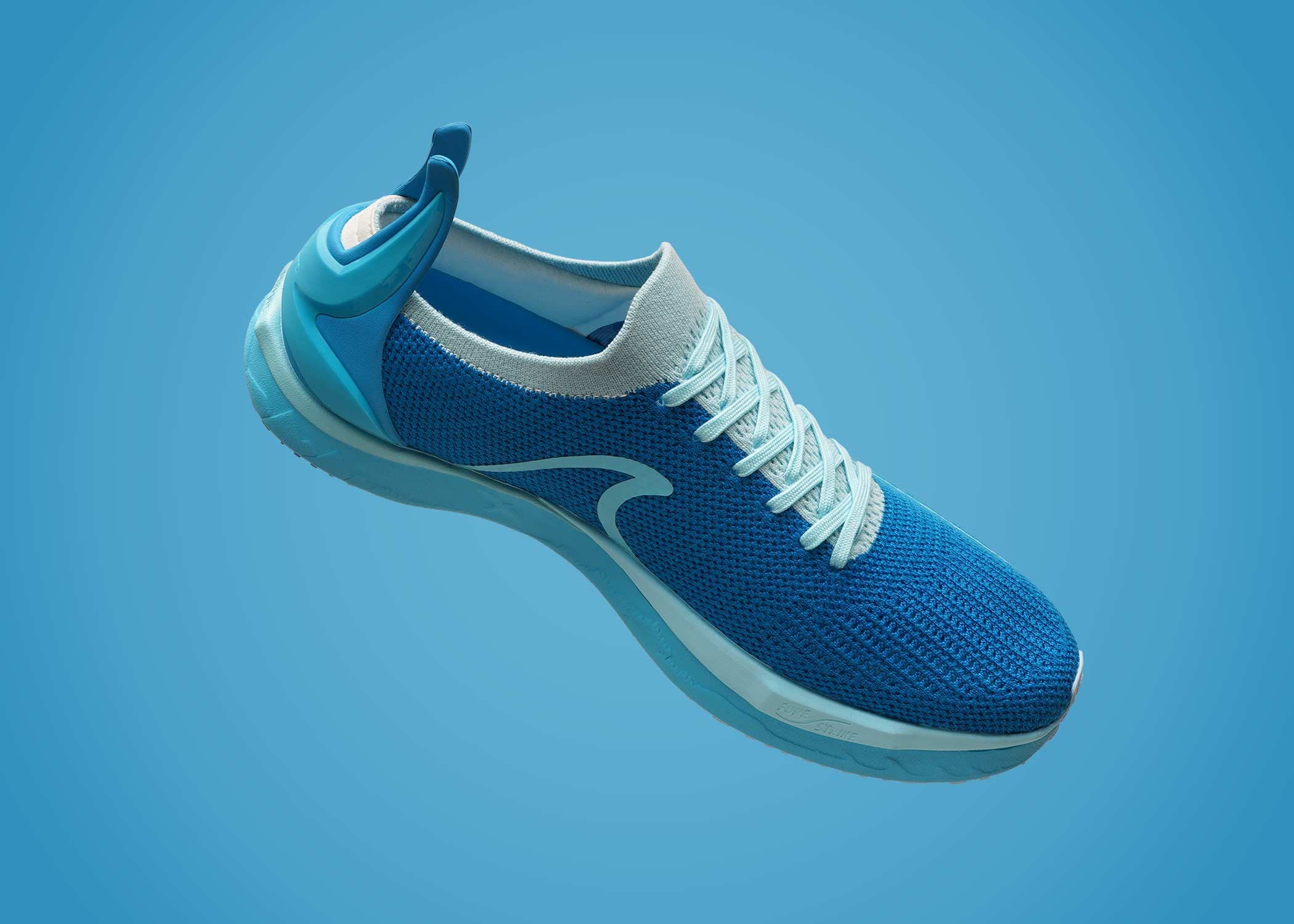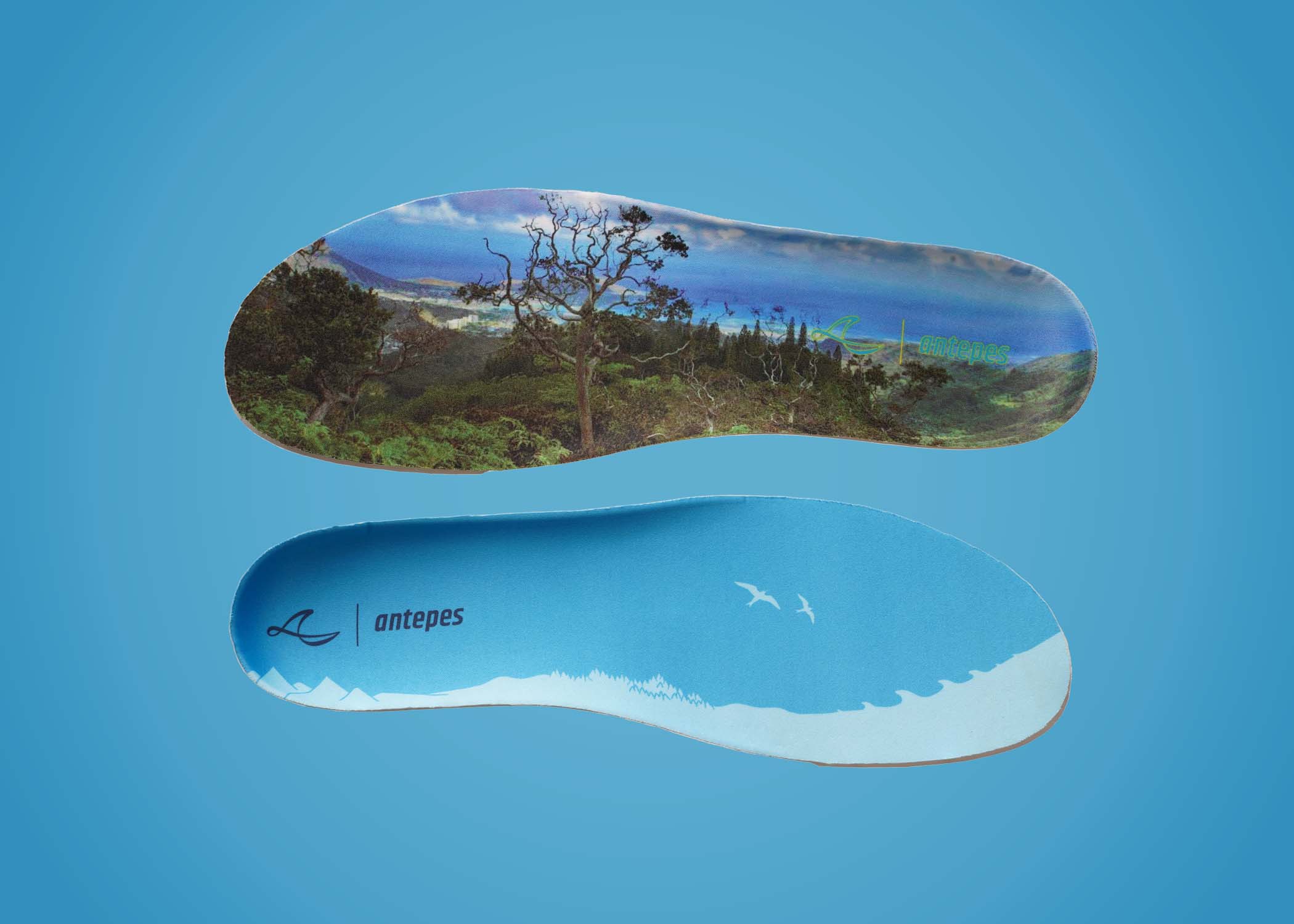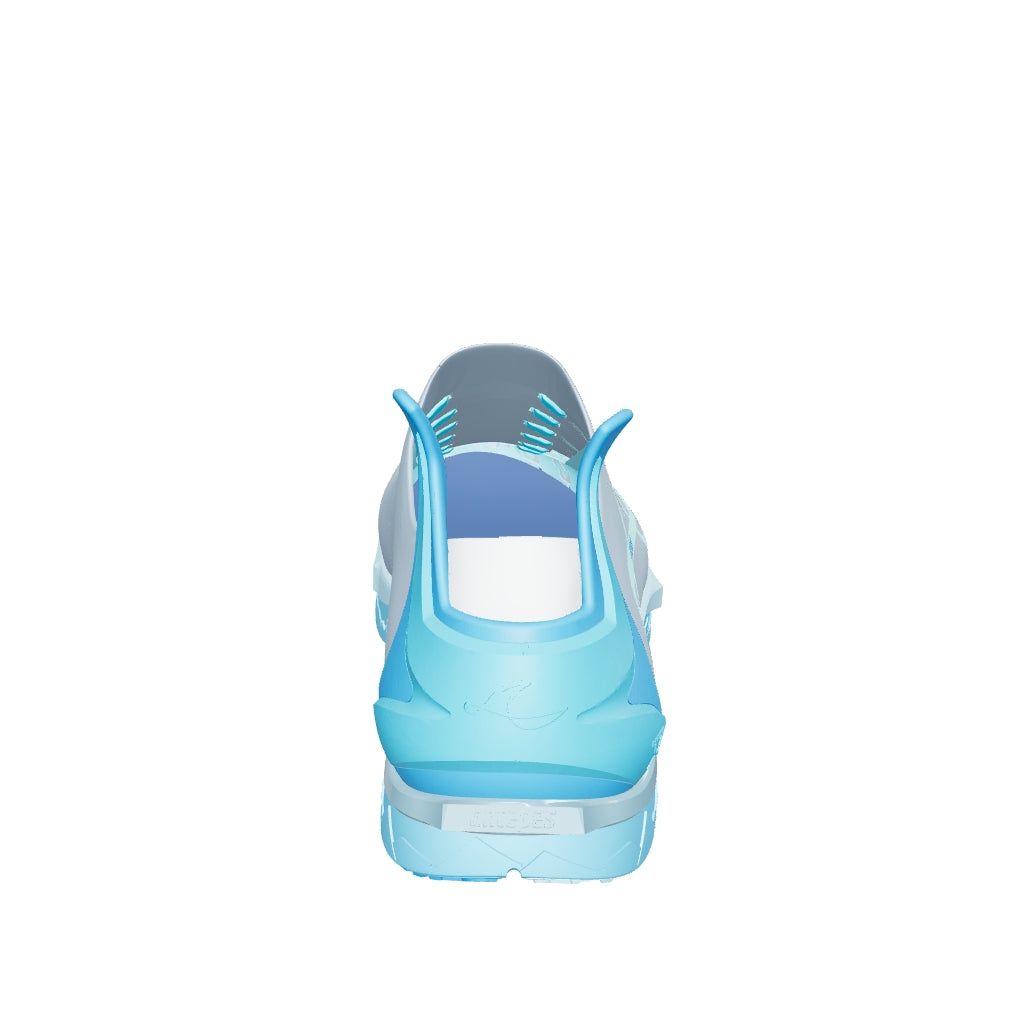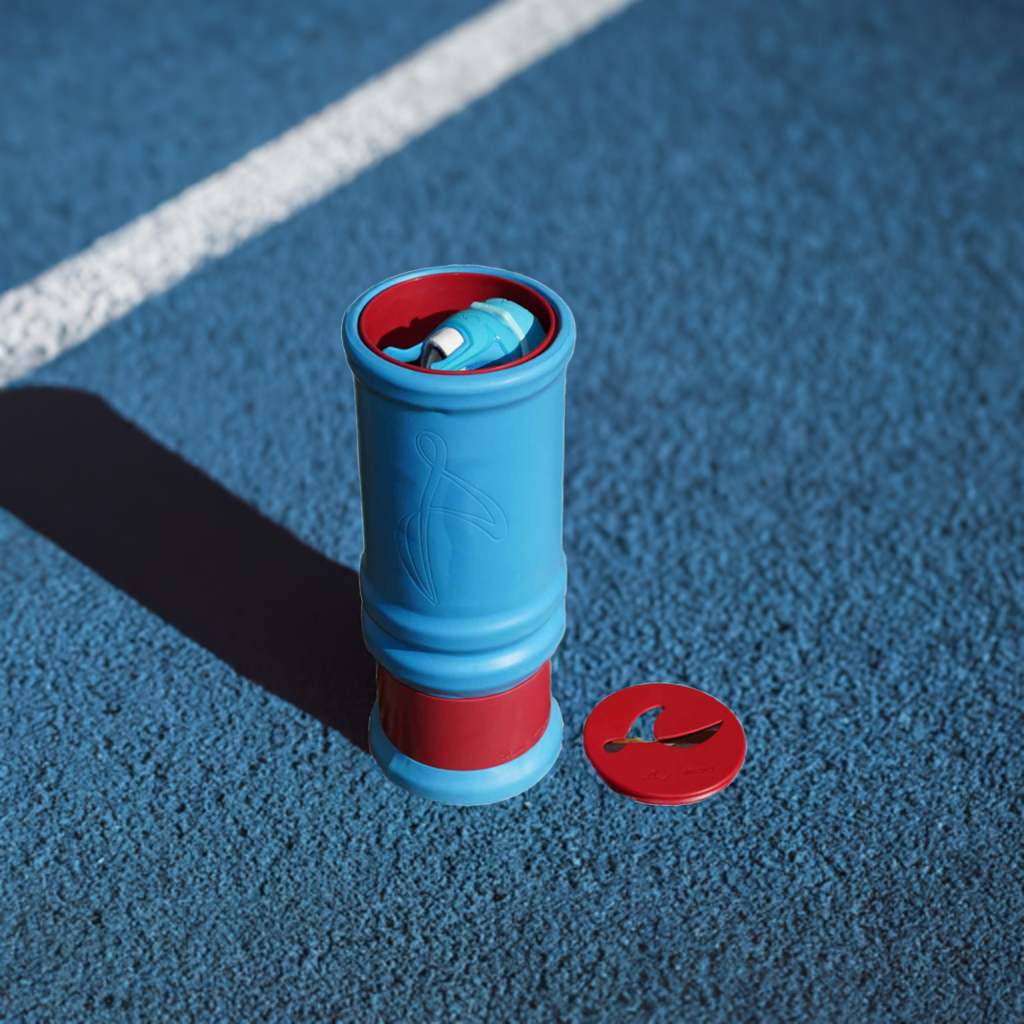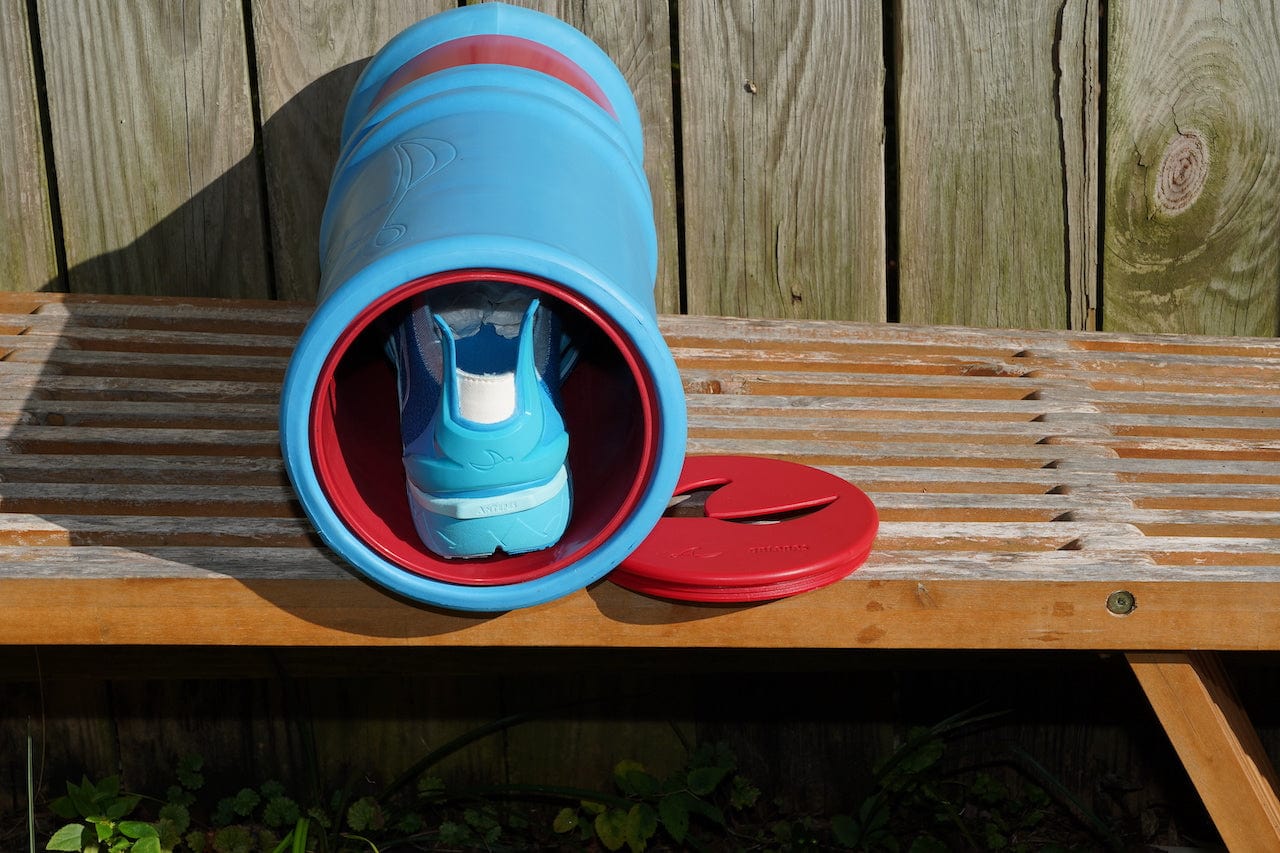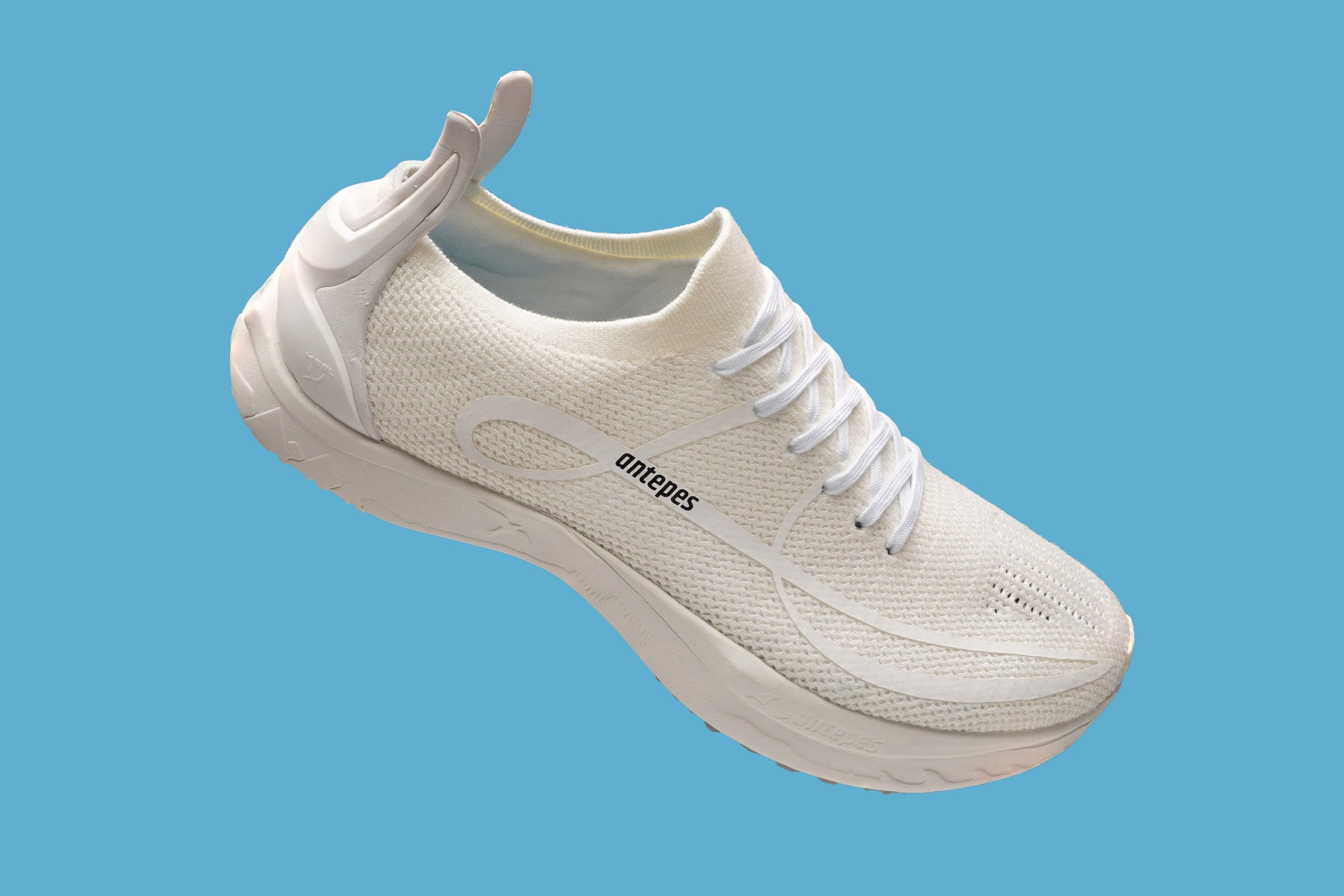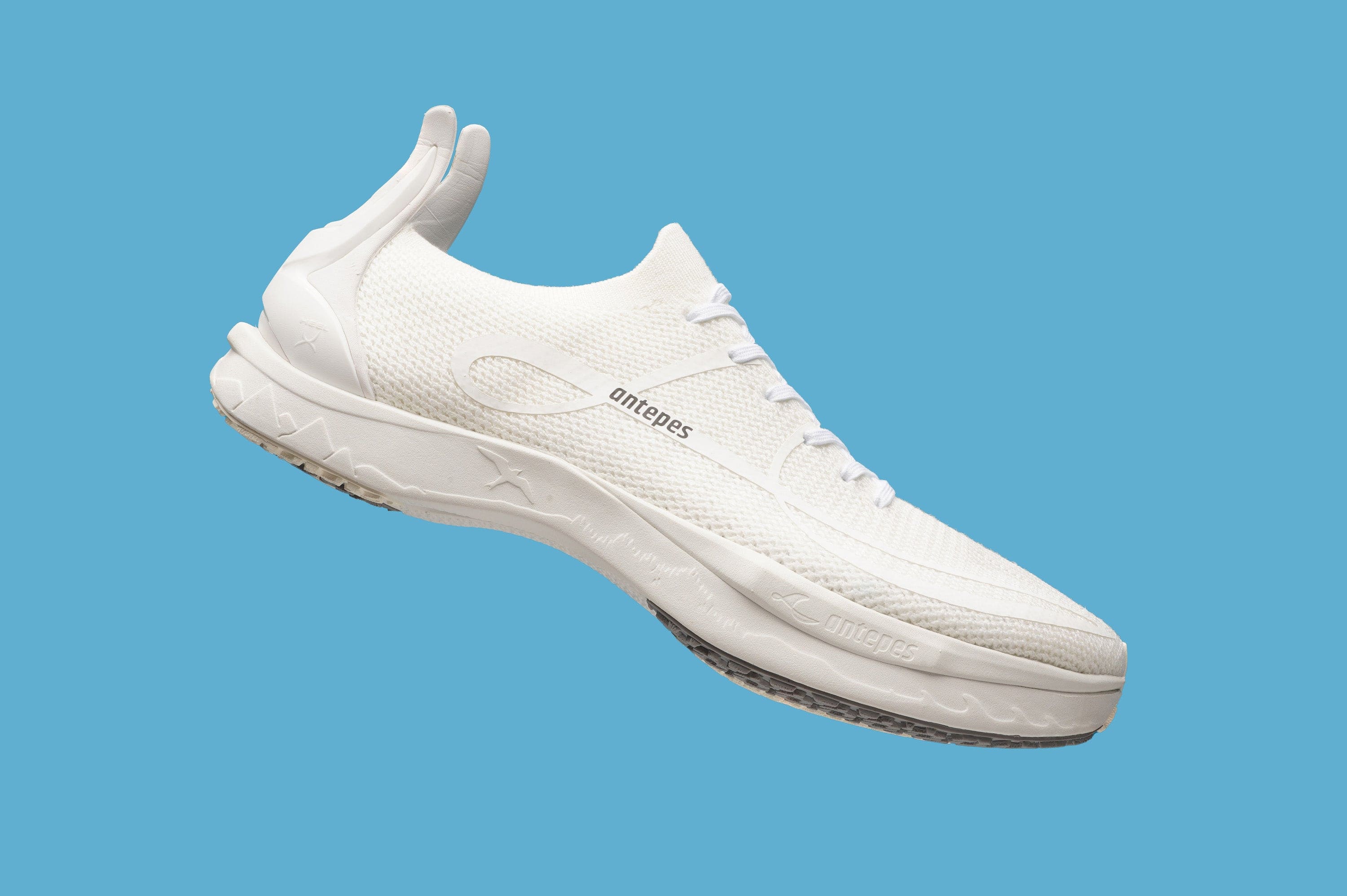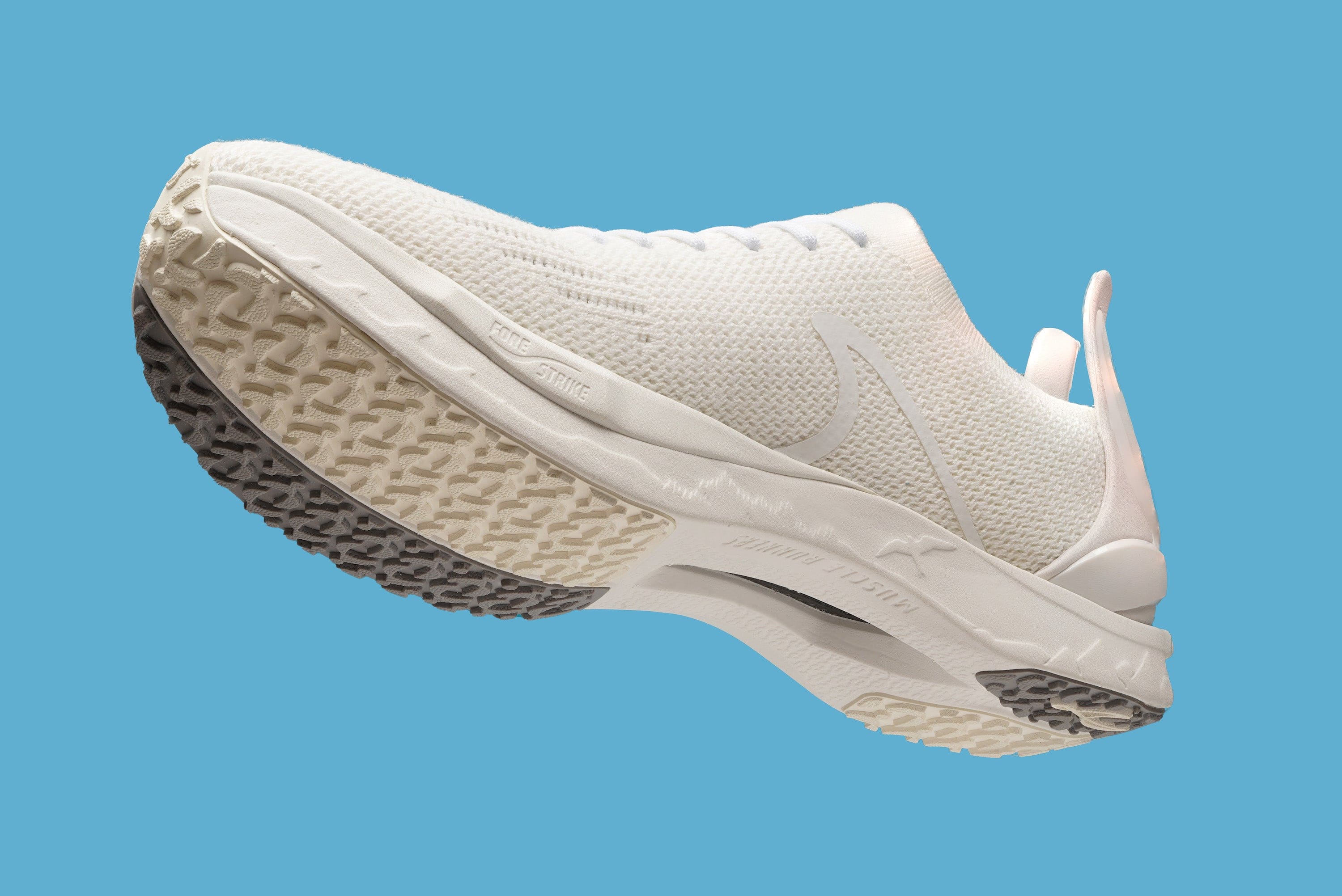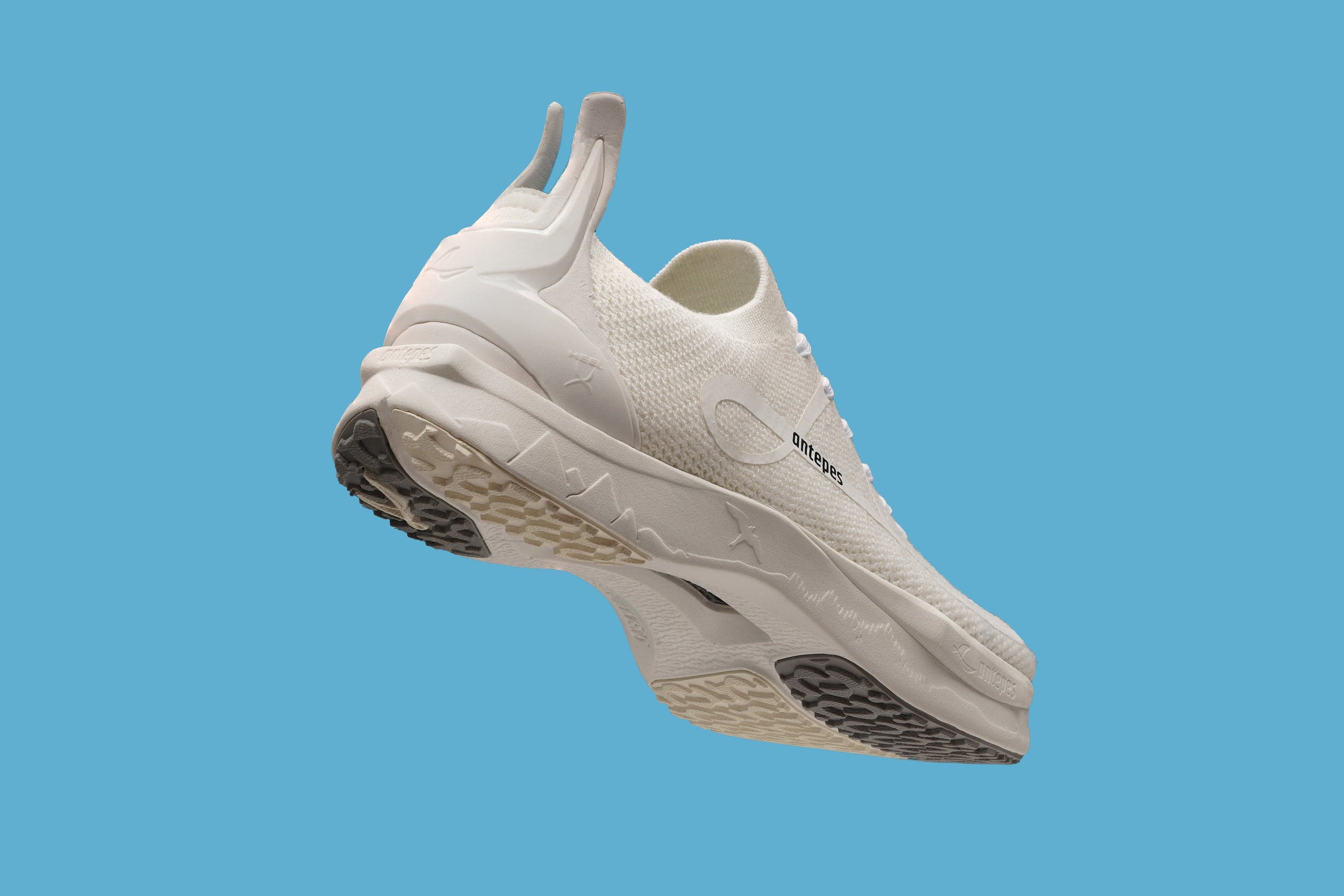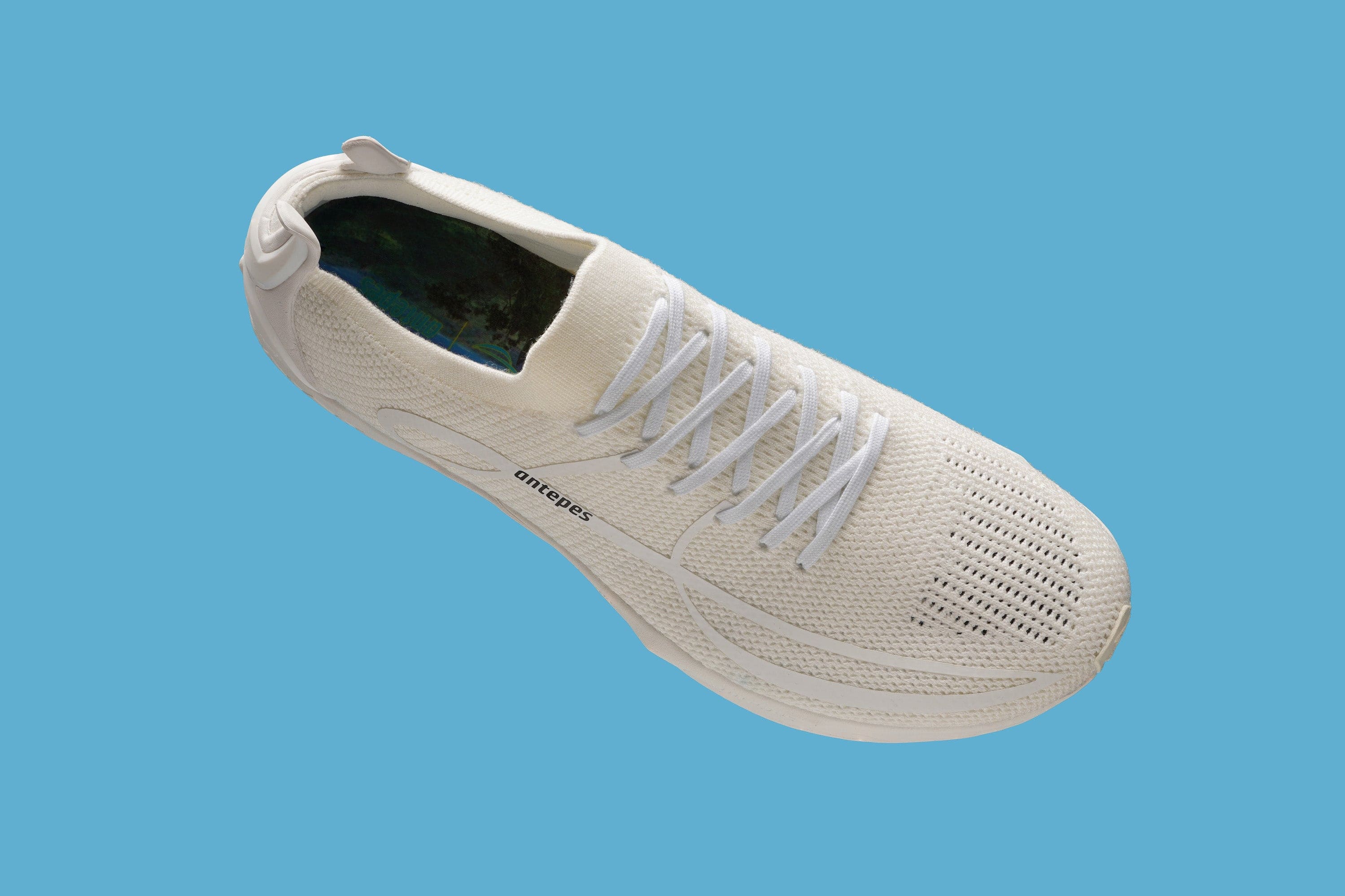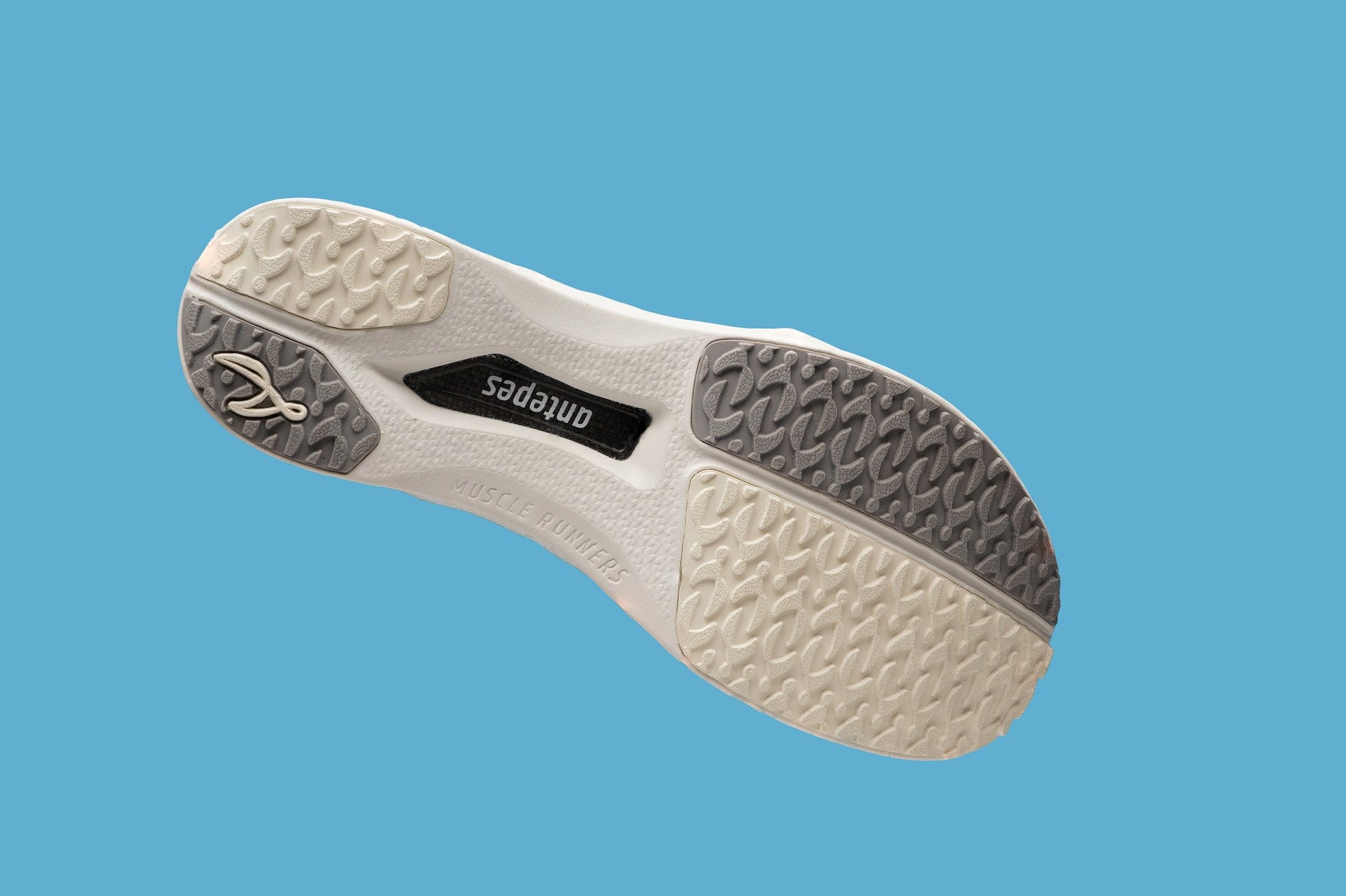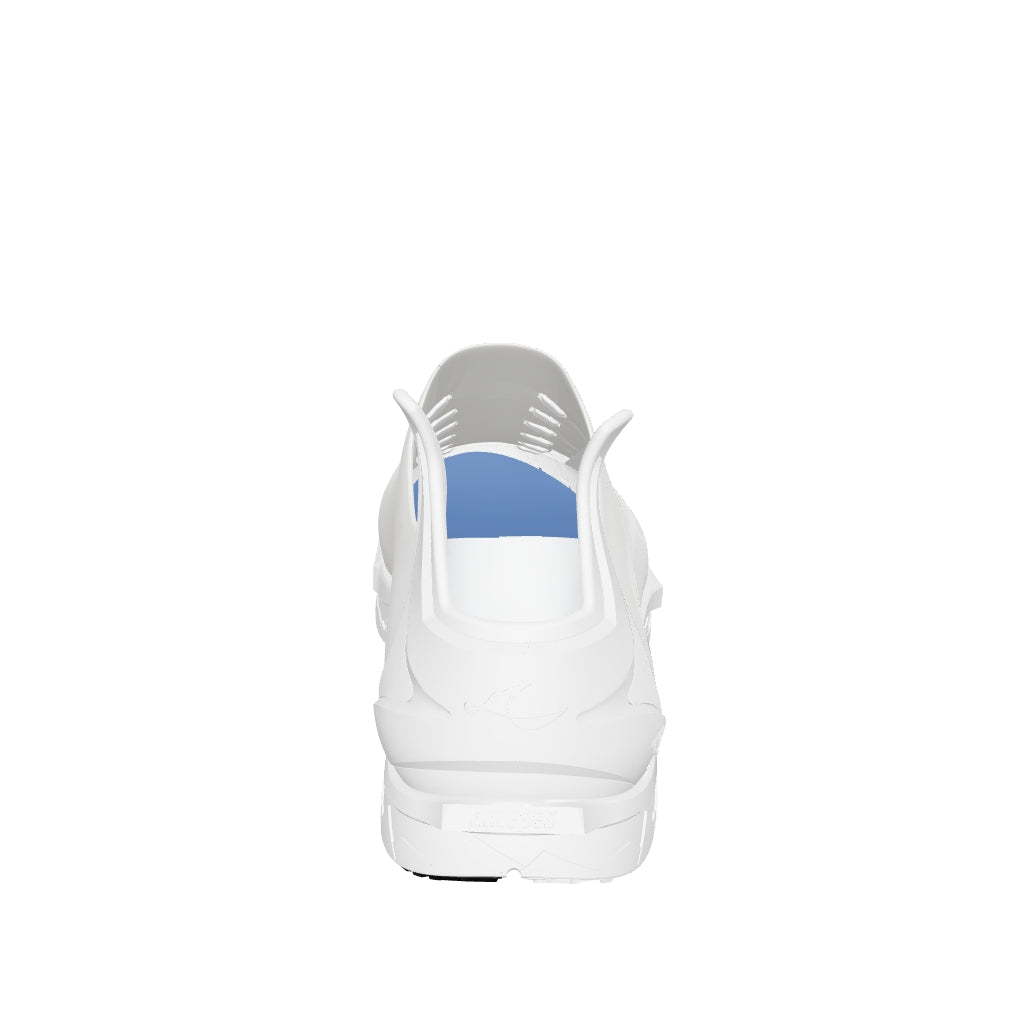Sprint speed is the product of stride length and leg speed (cadence). How you train to improve these qualities is vital for increasing your speed. So, what’s better? Training for stride length or leg speed when it comes to maximising sprint speed? Oh, and how did a certain Mr. Bolt do it?
The Perfect Tool
First things first though Muscle Runners are the perfect tool for improving sprint speed, no matter what your level or sport. These "fast" shoes are specifically designed to do the job. Here’s an example why.
Antepes Muscle Runners have a Dual-Flex Carbon Fiber Plate which is carefully crafted and positioned to be more flexible in the forefoot and more rigid under the arch and heel. The thought process behind this was to create a controlled “bow” in the shoes on foot-strike. This optimally “whips” your foot into and out of the ground contact. Sport scientists call this the “spring function”.
Stride length
The “perfect sprint” stride is neither too long (coaches call this over striding”) nor too short (“under-striding”). The optimum stride length is dependent on your sprint technique, how much power you can put into the ground, and physical qualities – such as the amount of speed producing fast twitch muscle fibre you have and something known as leg stiffness, of which more later.
Cadence
Most elite sprinters can move their legs 4-5 times every second – that’s to say complete 4-5 strides. If you focus on an elite, you’ll see the blur that this rapid leg cycle creates and the distance covered.
Interestingly at sub-elite level turnover is not much different (nor is it with increasing age - here it's stride length which suffers). It’s the force which is put into the ground coupled with optimum stride length which makes for the velocity difference.
Work too much on leg speed and there’s potential that stride length will decrease – this can be good if you were previously over striding or had a slower than average cadence. However, it’s not so good if you had an optimum stride length. Consider that you will cover more ground with an optimised stride length compared to one which is too short.
This is what made Usain Bolt so great. He had a huge, optimised stride length with more or less the same turnover at maximum velocity as his rivals. So, Bolt would be eating up the ground.
This is what made Usain Bolt so great. He had a huge, optimised stride length with more or less the same turnover at maximum velocity as his rivals. So, Bolt would be eating up the ground.
Research (1) indicates that Bolt took 41 steps to run his 100m world record which was around 4 less than his rivals. Bolt’s longest stride length was 2.872m between 60m-70m in the race.
For reference the average of his leg speed was 4.47 stride per second (sports scientists measure this in Hz).
Just for the record the leg speed capabilities of men and women hardly vary. Men run faster as they have more power.
In the research which looked at Bolt’s world record run there is a very telling reference – it being reported that:
“… 90% of a runner’s velocity is attributed to stride length, and anything after that increases through frequency.”
So, improving stride length using your built-for-speed Muscle Runners should be your priority.
As indicated, this is dependent on many factors. However, the great news is that with the right training you can optimise your stride length. In this post we'll look further into increasing leg stiffness - one such method. Do look out for other posts and the follow-up to this one which look more into this and considers other relevant factors.
Stiffness improves stride length
Another piece of research (2) looked at how well-trained male athletes improved their sprint speed over 6 months of specific training. Cutting to the chase it was discovered that maximum sprint speed was developed through:
“…. longer step length accompanied by increases in vertical and ankle joint stiffness…”
In short, the specific training of joint stiffness meant that more power could be extracted from the running surface. If the soft tissue of the legs (muscles, ligaments and tendons and even fascia) can create a "harder" and quicker block and subsequently enhanced return of force on ground contact then sprint speed will be increased.
Stride length increasing drills
1: Speed bounds
From a standing start leap forward by swinging one thigh away from you. When the thigh is near parallel to the ground, drive its foot back into the ground to strike it on the forefoot of your Muscle Runners. Immediately swing the other thigh forward and strike powerfully down into the ground again. Use a powerful arm drive to support the leg movements. At the start as you accelerate you can incline your body forwards as you would when sprint accelerating. The length of the bounds will increase as you beat inertia.
As you move away from the start get your torso more upright. Basically it’s succession of:
“Swing thigh to parallel very fast”
“Stamp down (drive) into ground from an elevated thigh position back under hips”
The idea is to drive/push your body forwards. Think of speed bounds as "stiff legged sprinting". There is little cyclical inclusion.
Do: 3-4 x 20m
2: Drop jumps
Drop jumps are great for developing leg stiffness. Use a sturdy platform. Its hight can vary between 30cm-90cm. Step off and minimise knee bend when landing on two feet. Contact the ground on the forefoot of your Antepes.
Focus on this minimal knee bend as you react to the contact as fast as you can as you jump up. Don't focus on height as this will slow your reaction.
Try to triple extend through the ankles, knees and hips. To reiterate get off the ground as fast as you can. Swing your arms to assist you.
Do: 3-4 x 6 from varied hights
Consider the speed of your reaction against the height of the drop, if you feel it is too slow then use a lower drop.
Another way to consider this is to monitor how much you bend your knees on ground contact, if it is more than a few degrees and you are lowering (yielding too much to the force) then this indicates the drop is too great.
In part 2 of this post, we will look more into how you can improve stride length and leg speed as well as considering leg stiffness some more and fast twitch muscle fibre.
References:
1: Multicomponent Velocity Measurement for Linear Sprinting: Usain Bolt’s 100 m World-Record Analysis
Bioengineering (Basel). 2023 Nov; 10(11): 1254.
Published online 2023 Oct 26. doi: 10.3390/bioengineering10111254
2: Development of maximal speed sprinting performance with changes in vertical, leg and joint stiffness
J Sports Med Phys Fitness. 2017 Dec;57(12):1572-1578.doi: 10.23736/S0022-4707.16.06622-6. Epub 2016 Jul 13.


